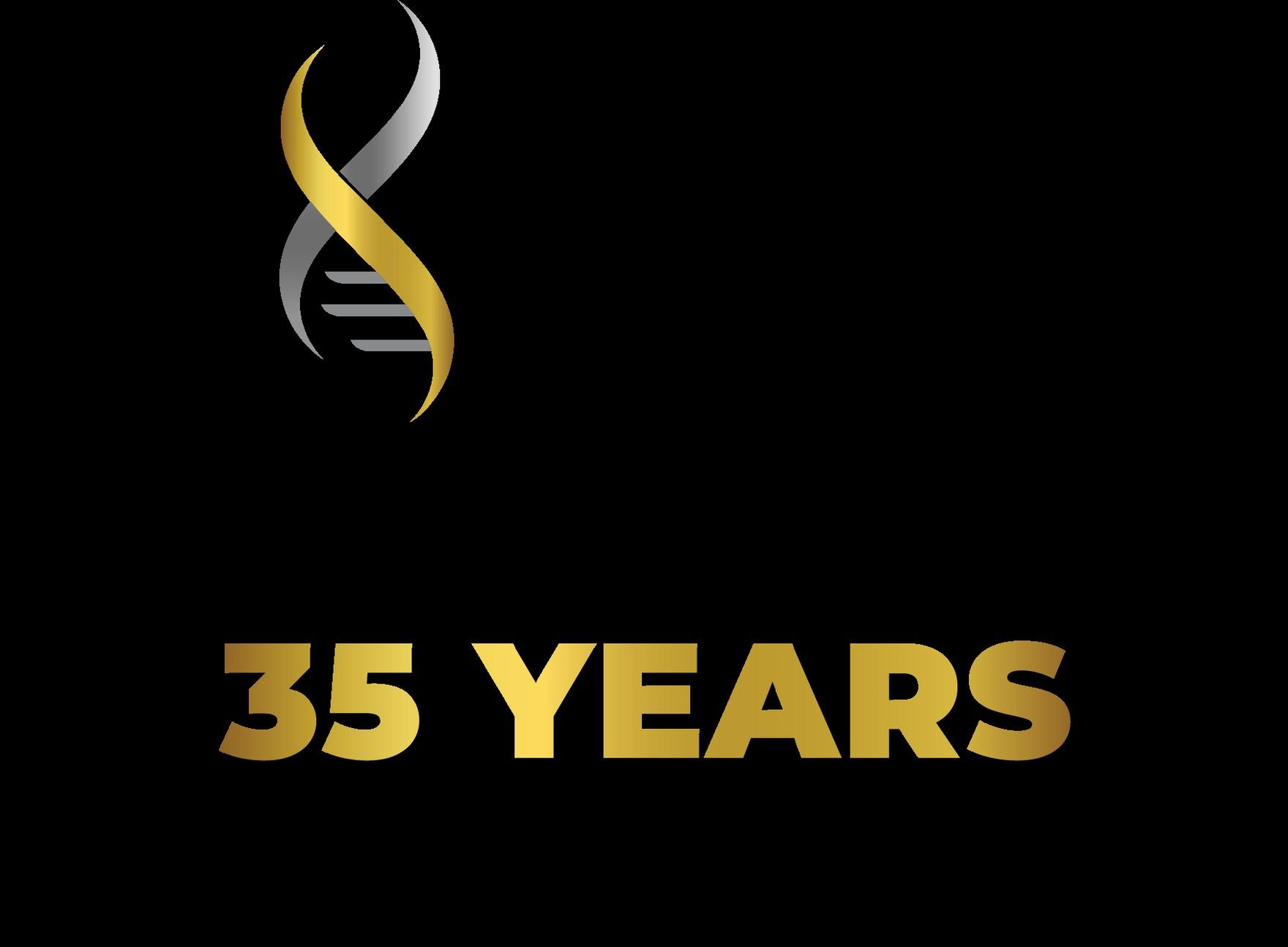

2025
IMF PATIENT AND FAMILY SEMINAR
LOS ANGELES, CA

AUGUST 15 & 16, 2025
Thank you to our sponsors!




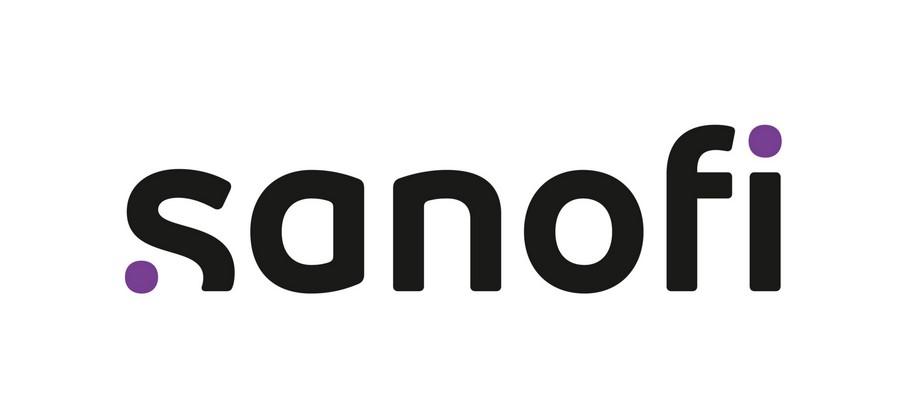

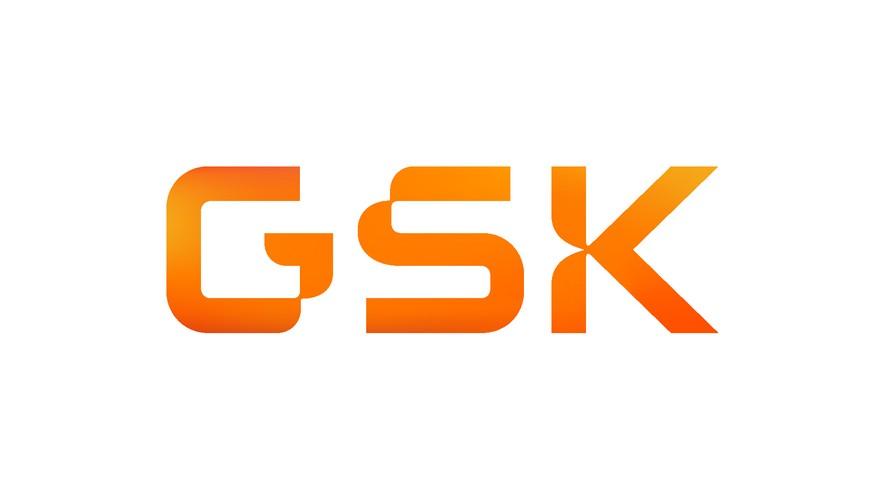





IMF Program Evaluations
Please return your program evaluations on your way out – whether you stay for the full program, or only one session, your feedback is invaluable to our team. Thank you for taking the time completing this.



Welcome & Announcements
Robin Tuohy, Vice President, Patient Support
International Myeloma Foundation
IMF Highlights
Diane Moran, RN, MA, EdM
Chief Executive Officer (Interim) and Senior VP, Strategic Planning
International Myeloma Foundation
IMF PATIENT AND FAMILY SEMINAR
LOS ANGELES AGENDA
SATURDAY MORNING

Understanding Clinical Trials
Joseph Mikhael, MD, MEd, FRCPC, FACP, FASCO, Chief Medical Officer, International Myeloma Foundation
Fireside Chat: What is the Future of Myeloma? With Q&A
Joseph Mikhael, MD, MEd, FRCPC, FACP, FASCO, Chief Medical Officer, International Myeloma Foundation
Shaji Kumar, MD
Mayo Clinic, Rochester, MN
BREAK
Breakout Sessions #1: Treating Myeloma
Breakout A: Newly Diagnosed: Frontline Therapy
Sarah Lee, MD
City of Hope, Duarte, CA
Breakout B: Managing Relapsed Myeloma
Murali Janakiram, MD, MS
City of Hope, Duarte, CA
Housekeeping Items
Presentation Slides: Are available by scanning the QR code, Instructions are on the QR code handout on each table.
Program Evaluations: evaluations at the end of the program or on your way out.
Restrooms: Restrooms are located outside the meeting room, either down the stairs from the welcome desk, or on this level: past the welcome desk turn left and the bathrooms are on your left.

Badge Holders: Please return your badge holders and we can recycle them.
We greatly appreciate your time and feedback!



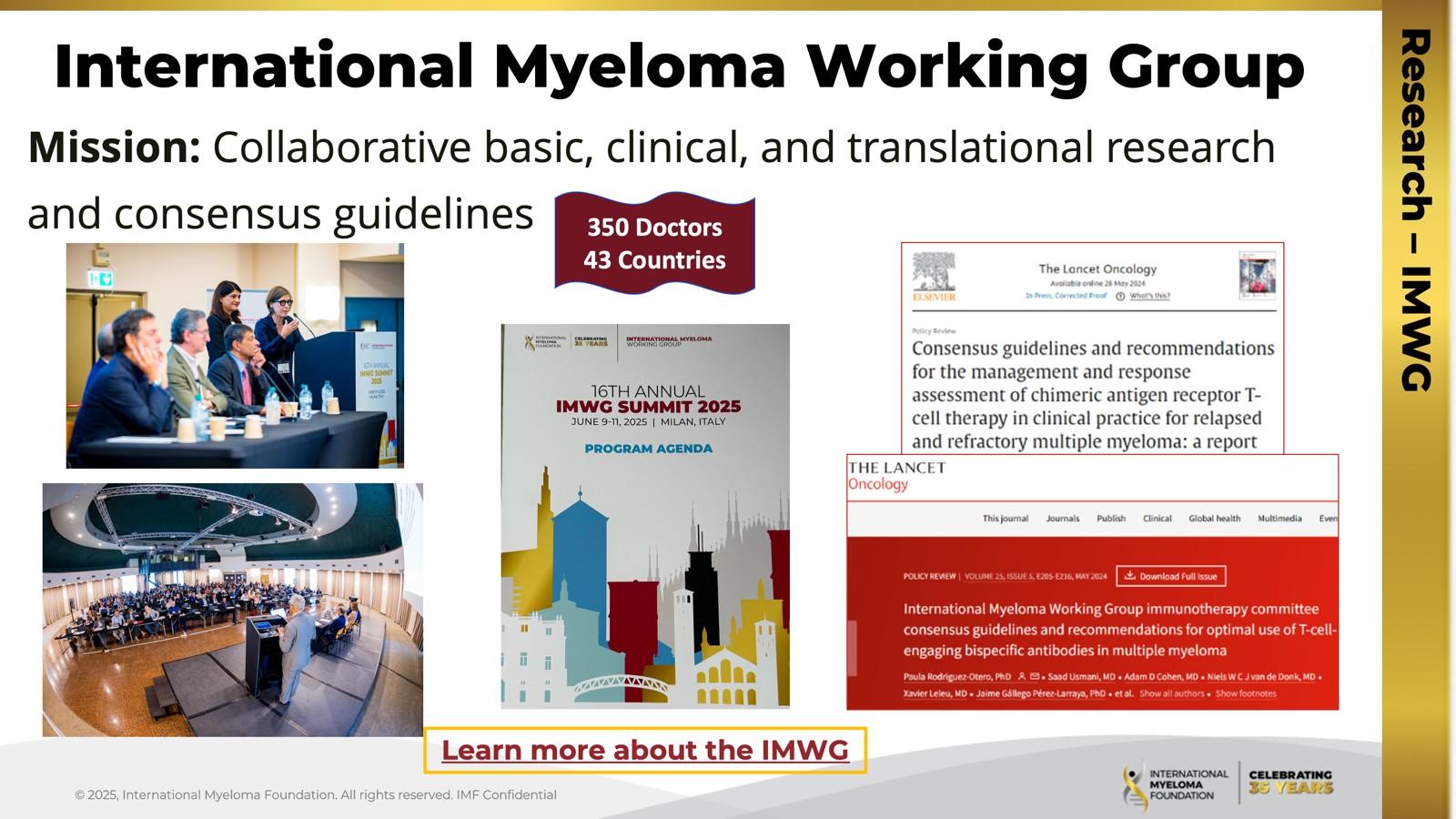
Scientific Advisory Board


S. Vincent Rajkumar, MD IMF Board Chair


Thomas Martin, MD
UCSF, Helen Diller Family Comprehensive Cancer Center


Wee Joo Chng, MD
National University of Singapore


María-Victoria Mateos, MD, PhD University of Salamanca


Vania Hungria, MD, PhD Santa Casa de São Paulo


Joseph Mikhael, MD, MEd, FRCPC, FACP IMF Chief Medical Officer


Sigurður Yngvi Kristinsson, MD, PhD University of Iceland


Philippe Moreau, MD University Hospital of Nantes


Shaji Kumar, MD Mayo Clinic


NIkhil Munshi, MD Dana-Farber Cancer Institute


Jesús San Miguel, MD, PhD University of Navarra


Sagar Lonial, MD, FACP
Winship Cancer Institute, Emory University


Saad Zafar Usmani, MD, MBA, FACP, FASCO
Memorial Sloan Kettering Cancer Center
The IMF Support Group Team is Here
For You!
Shared Experiences Help to Better Understand the Myeloma Journey
• Support Groups empower patients & care partners with information, insight & hope
• The IMF provides educational support to a network of over 150 myeloma specific groups

150+ US Support Groups
Over 200 Support Group Visits/year



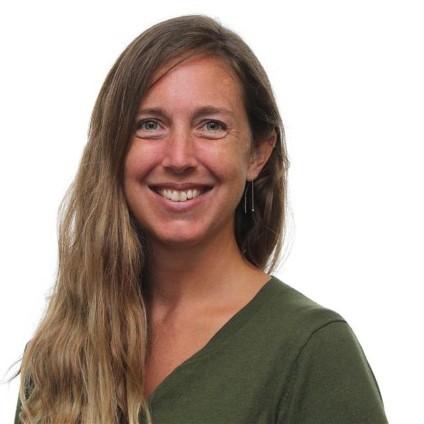

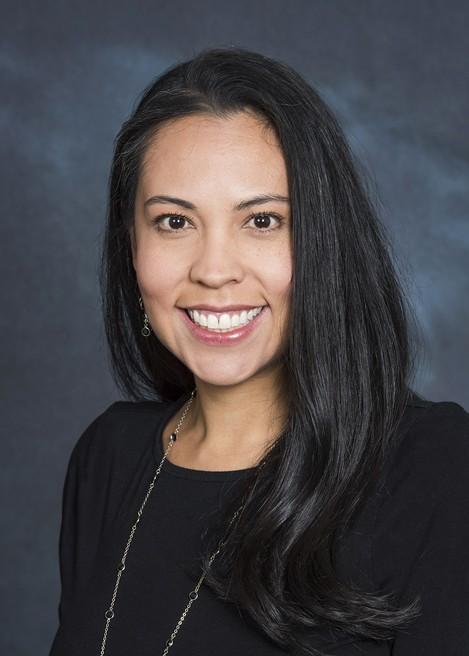

Los Angeles
Meets virtually on the 3rd Saturday of each month at 10:30AM Pacific Time
City of Hope
Meets virtually on the 3rd Wednesday of each month at 3:00PM Pacific Time
Rancho Mirage
Meets in-person on the 1st Thursday of each month at 3:00PM Pacific Time
Inland Empire
Meets hybrid on the 3rd Saturday of each month at 11:00AM Pacific Time
Sacramento
Napa Valley/Sonoma
Meets virtually on the 2nd Friday of each month at 10:00AM Pacific Time
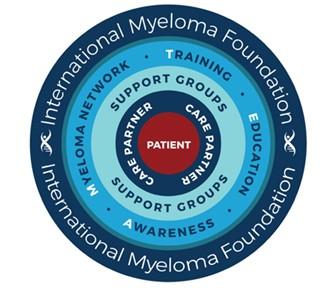

Meets virtually on the 1st Saturday of each month at 10:00AM Pacific Time
San Diego
Meets hybrid on the 2nd Monday of each month at 6:30PM Pacific Time
San Fernando Valley
Meets virtual on the 3rd Wednesday of each month at 7:00PM Pacific Time
Orange County
Meets virtually on the 1st Thursday of each month at 6:00PM Pacific Time
San Francisco Bay Area
Meets virtually on the 3rd Saturday of each month at 10:00AM Pacific Time
San Gabriel Valley
Meets hybrid on the 1st Monday of each month at 6:30PM Pacific Time
Santa Cruz
Meets virtually on the 1st Monday of each month at 4:30PM Pacific Time

Upland
Meets hybrid on the 1st Friday of each month at 10:00AM Pacific Time
Westlake Village/ Thousand Oaks/ Ventura County
Meets virtually on the 2nd Saturday of each month at 11:00AM Pacific Time

Special Interest Groups
Special interest groups are designed as a supplemental support for specific populations of patients, in addition to their local Support Groups
MM Families
Founded in 2021
For patients & care partners with young children
Las Voces de Mieloma
Founded in 2022
For Spanish speaking patients & care partners
Living Solo & Strong
Founded in 2022
For patients without a care partner

Click here for more inf
Smolder Bolder
Founded in 2023
For smoldering myeloma patients & care partners

Veterans SIG
Founded in 2025
For those who served our country
High Risk Multiple Myeloma
Founded in 2023
For high-risk myeloma patients & care partners
Care Partners Only
Founded in 2024
For myeloma care partners only
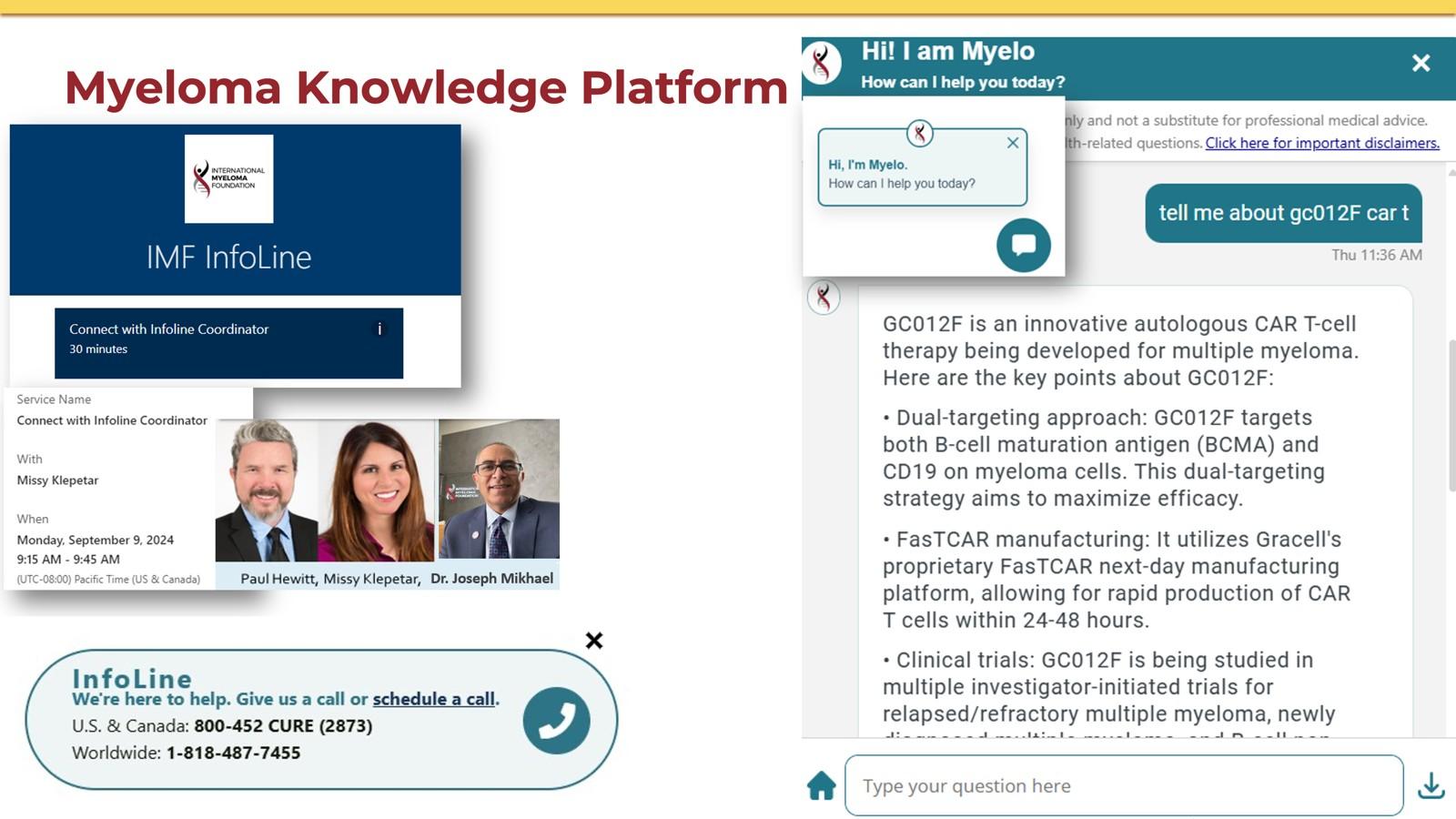
CLINICAL TRIALS MATCHING ENGINE
Seamlessly matching patients to the latest clinical trials.
• Discover clinical trials tailored to your myeloma journey with the IMF.
• Filter by diagnosis, treatment, and location to find the best fit for you.
Clinical Trials Matching Engine Usage






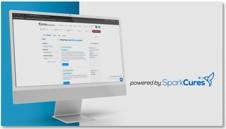




WRITTEN EDUCATION
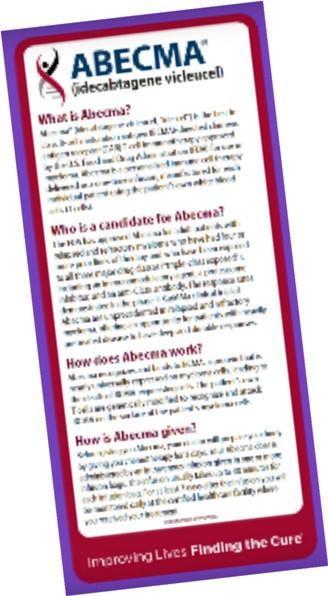
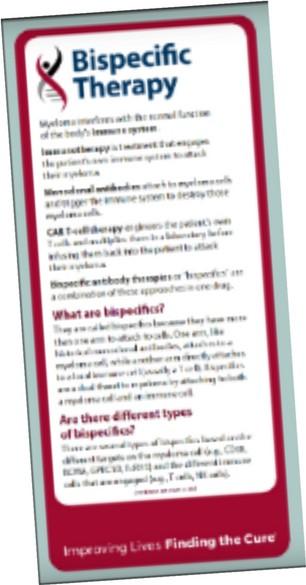
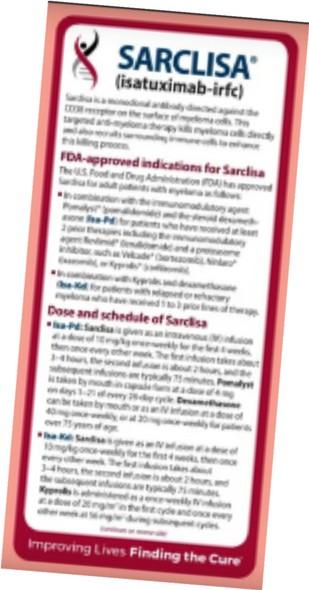





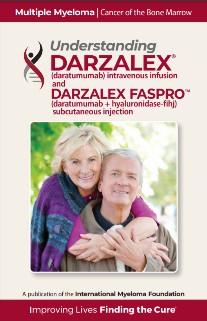
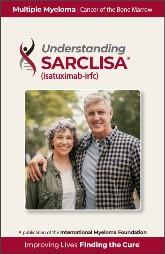

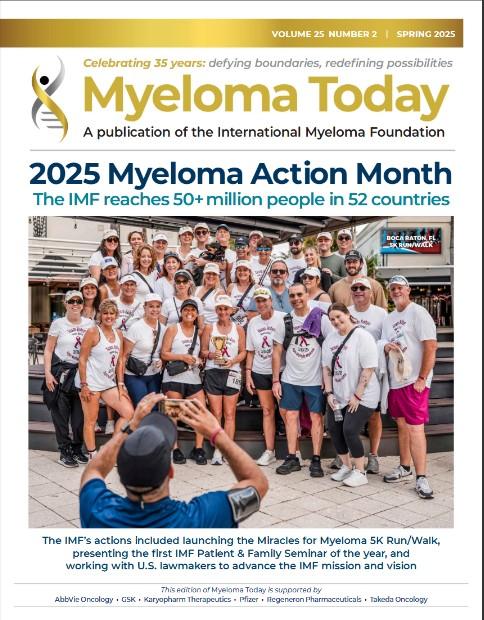


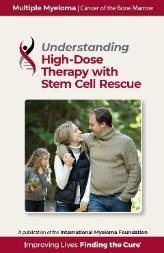

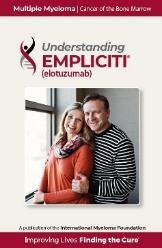
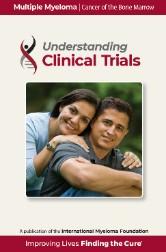
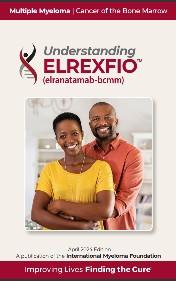



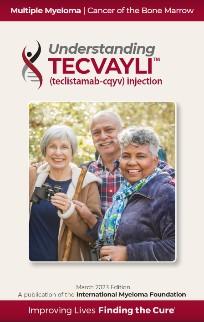
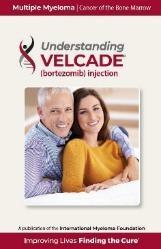


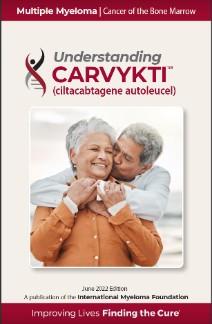



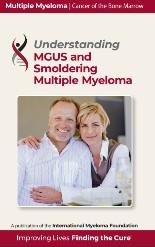

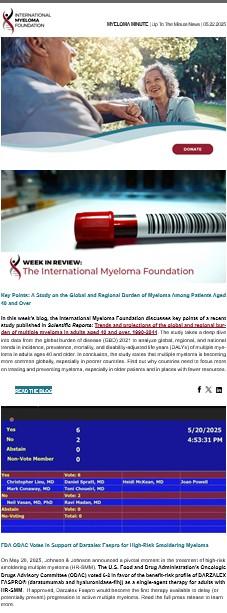
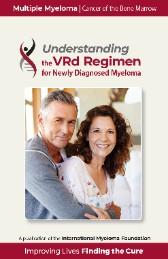



Live Patient Education
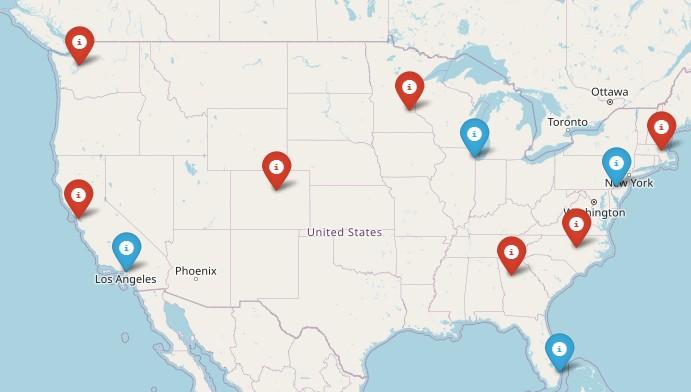



2025 Live Patient Education
Patient & Family Seminars
• Boca Raton, FL – March 14 – 15
• Philadelphia, PA – May 2 – 3
• Los Angeles, CA – August 15 – 16
• Chicago, IL – October 3 – 4

Myeloma Community Workshops
• Virtual - March 4
• San Mateo, CA - March 29
• Atlanta, GA - April 5
• Edina, MN - April 26
• Denver, CO - June 21
• Virtual – July 29
• Seattle, WA - August 9
• Waltham, MA - September 27
• Raleigh-Durham, NC - November 15
• Virtual – November 18

1. Ensure Access to Care: We advocate to ensure all myeloma patients have equitable, comprehensive, patient-centered care without insurance barriers that limit options or delay treatment initiation.
2. Eliminate Financial Barriers: We advocate for policies that allow myeloma patients access to treatments and supportive care interventions without facing financial hardships.
3. Advance Myeloma Research: We advocate for annual appropriations funding for myeloma research and the advancement of clinical trial eligibility and research protocols that ensure representation from diverse populations.

The IMF Grassroots Advocacy Program is multi-faceted and growing
• Advocacy Training & Leadership Development
• Policy and Legislative Education
• Grassroots Campaign Planning
• Health Policy Forums & Roundtables
• Advocacy Resource Development
• Storytelling and Personal Narratives
Scan for Upcoming Programs and Events!
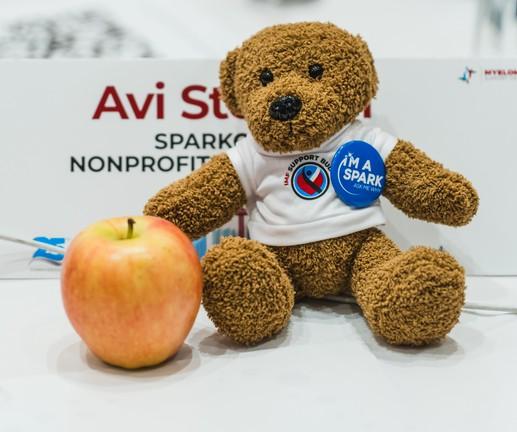



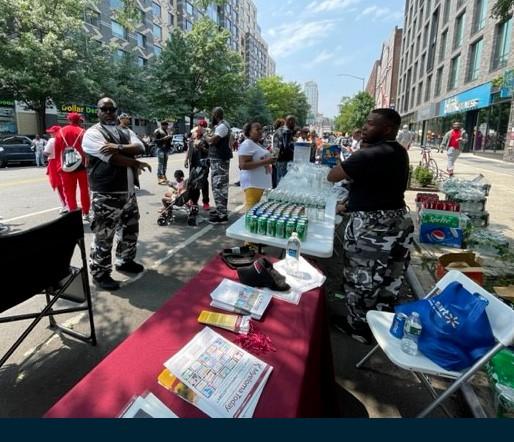

Diane Moran, RN, MA, EdM Chief Executive Officer (interim)
SVP
Planning with the IMF since April 2006

900,000 + views

• Support Groups
• InfoLine
• PFS
• RCW




3600 Nurses serving 23,000 patients with MM
• Nurse Leadership Board
• ONS Symposium
• Myeloma University

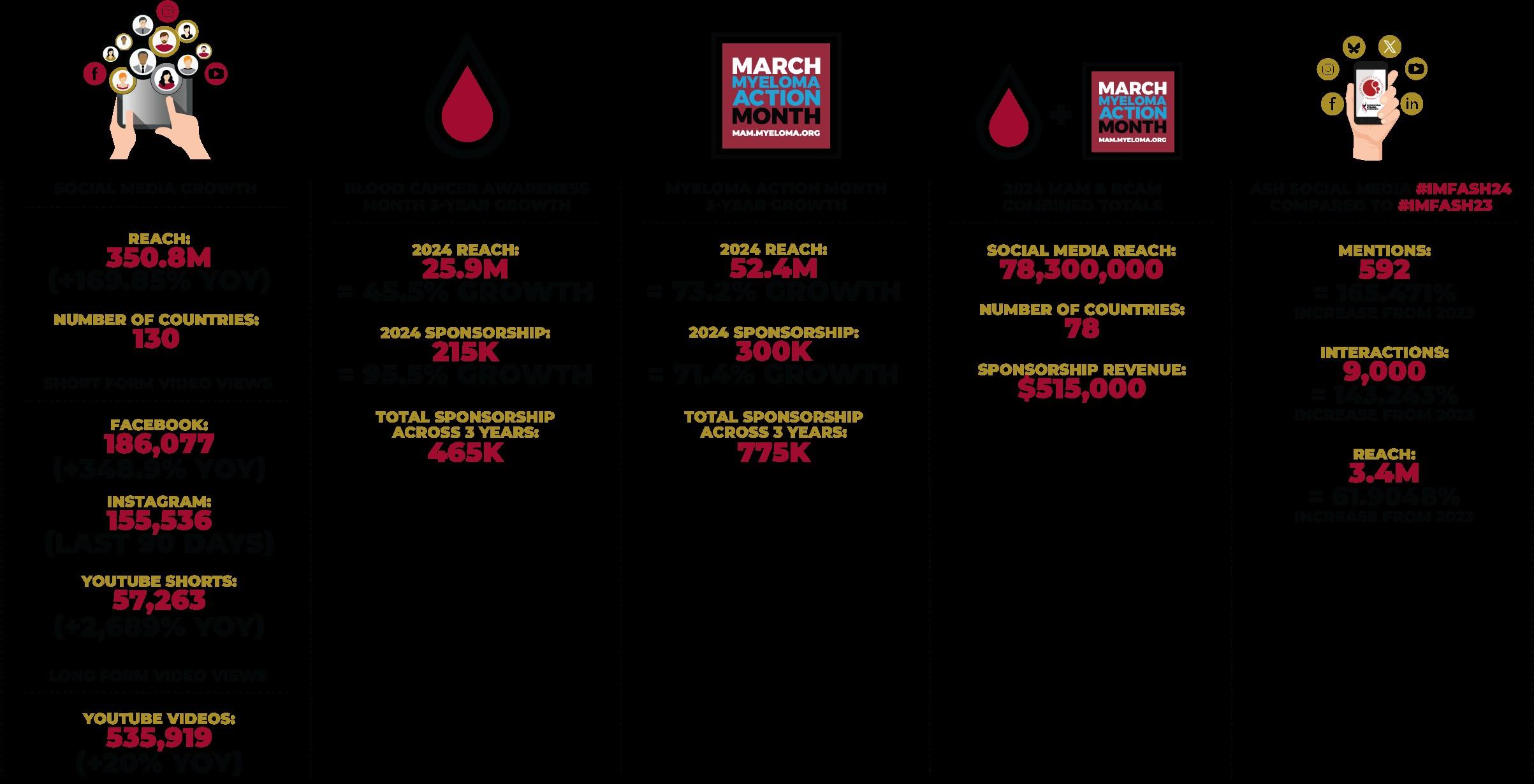





InfoLine Support groups GMAN Members IMWG Members


A world where every myeloma patient can live life to the unburdened by the disease.
Understanding Clinical Trials
Joseph Mikhael MD, MEd, FRCPC, FACP, FASCO Chief Medical Officer, International Myeloma Foundation
Professor, Translational Genomics Research Institute, City of Hope Cancer Center


Provide The Rationale For Clinical Trials
Objectives
Outline The Phases Of Clinical Trials
Discuss The Risks And Benefits Of Clinical Trials



Clinical Trials - Overview

Some Of The Important Principles Of Clinical Trials:
The drive of research has brought us to where we are
No one is expected to be a “guinea pig” with no potential benefit to them
Research is under very tight supervision and standards
Open, clear communication between the physician and the patient is fundamental Driving research forward!





MYTH: If I participate in a clinical trial, I might get a placebo, not active treatment
MYTH: If I participate in a clinical trial, I can’t change my mind
Clinical Trials: Myths
• Phase 1 and 2, everyone gets active treatment
• Phase 3 standard of care vs new regimen: often standard regimen with/without additional agent in MM trials
• Patients can withdraw their consent for clinical trial participation at any time

MYTH: Clinical trials are dangerous because they have new medicines and practices
• Some risk is involved with every treatment, but medicines are used in clinical trials with people only after they have gone through testing to indicate that the drug is likely to be safe and effective for human use



MYTH: Clinical trials are expensive and not covered by insurance
• Research costs are typically covered by the sponsoring company
• Standard patient care costs are typically covered by insurance
• Check with clinical trial team/insurers; costs such as transportation, hotel, etc may not be reimbursed and are paid by patient
PhRMA website. Accessed March 25, 2024. https://phrma.org/-/media/Project/PhRMA/PhRMA-Org/PhRMA-Org/PDF/A-C/CLINICAL-TRIALS-MYTH-FACT-PRINT.pdf?hsCtaTracking=f6689b95-1626-40d9-8c87-c6b 8d31600a4%7C35221aa8-d487-4db3-9416-b9c3c35e3bac
.



Clinical Trials – Why Me??
Every patient is unique and must be viewed that way
Benefits of trials are numerous and include:
Early access to “new” therapy
Delay use of standard therapy
Contribution to myeloma world – present and future
Financial access to certain agents
Must be balanced with potential risks
“Toxicity” of side effects
Possibility of lack of efficacy


Overview of New Drug Development
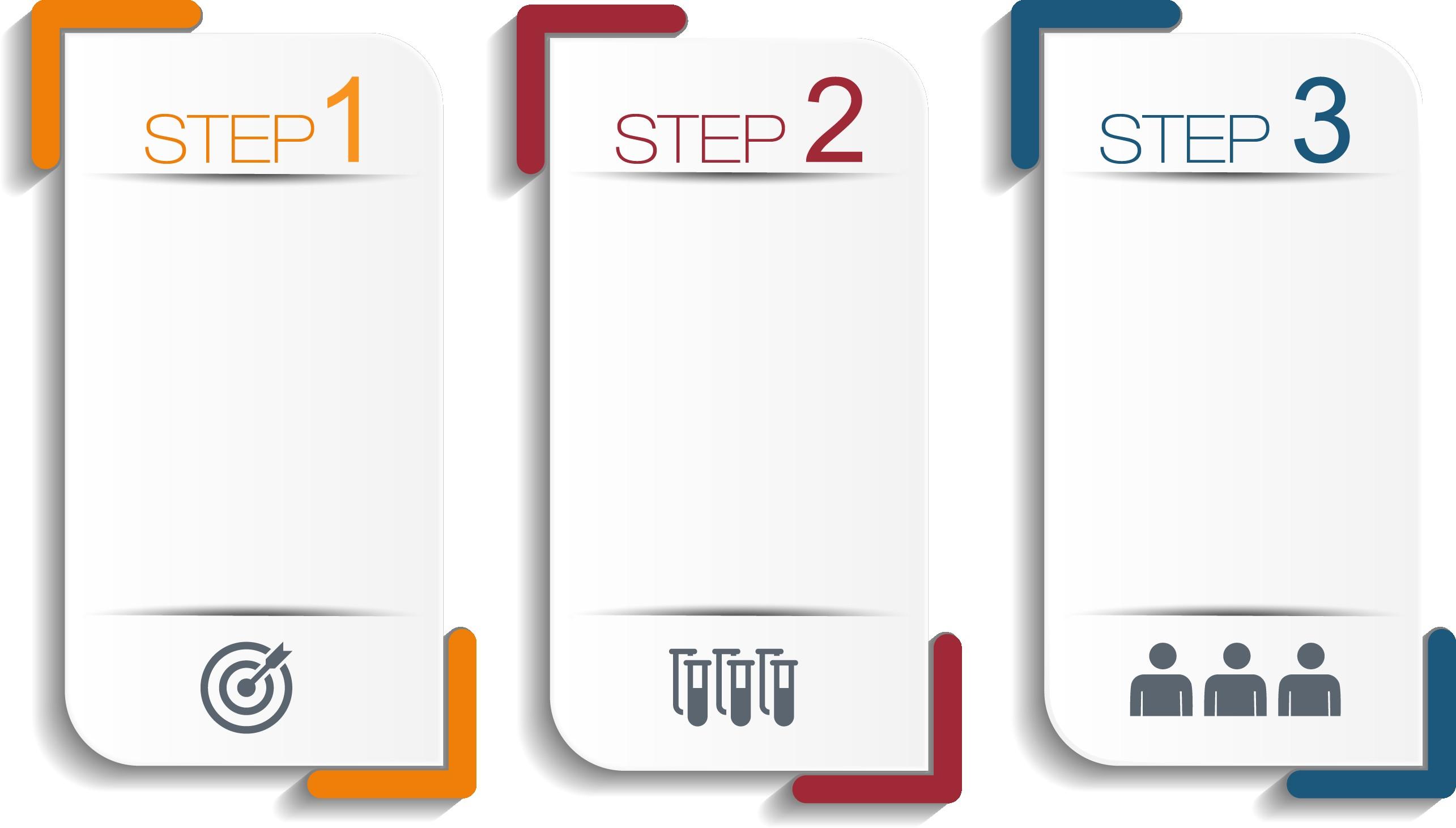
Identify a target for therapy in the laboratory
Confirm the anticancer activity in laboratory and animal studies
Clinical trials (human studies) to determine safety, dosing and effectiveness
The whole process costs millions of dollars and years of effort!


Even Before Phase I
Most agents are tested in lab models
Various “myeloma cell lines”, also known as “in vitro”
Next step is animal model
We are more like mice than you think!!
Earliest study in Phase I is called “First in Human”
Often uses extremely low dose of drug to ensure safety


Phase 1 Clinical Trials
All patients receive the experimental therapy
Phase 1 trials find the optimal dose of a new drug or drug combination
Patients get higher doses as the study continues
Determine side effects of new drugs or combinations
Explore how the drug is metabolized by the body

Important for all stages of myeloma



Phase 2 Clinical Trials
Determine if a new drug or combination is effective against the cancer
May be added to a Phase 1 study once the ideal dose is found
Patients usually receive the experimental therapy
In some cases, the study may include two “arms” comparing either two different doses or a different treatment (another combination of drugs)
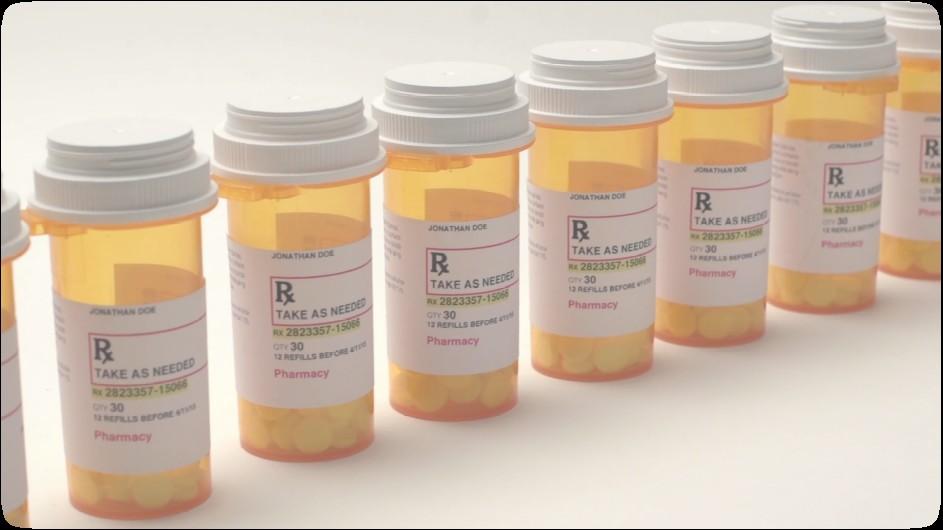


Phase 3 Clinical Trials
Highest form of clinical evidence. Typically, a large number of patients are required…usually required for full FDA approval
Patients receive either an experimental therapy (one or more drugs) or the current standard treatment
o The patient is randomly assigned to a treatment—a process called “randomization”
o Neither the physician or the patient can determine which treatment is given

May be placebo controlled, if no standard treatments are available
Very closely monitored for effectiveness and side effects

Preclinical
Clinical Trial Phases
ANIMAL STUDIES: Examine safety and potential for efficacy
PHASE 1
PHASE 2
FIRST INTRODUCTION OF AN INVESTIGATIONAL DRUG INTO HUMANS
• Determine metabolism and PK/PD actions, MTD, and DLT
• Identify AEs
• Gain early evidence of efficacy, studied in many conditions; typically, 20 to 80 patients; everyone gets agent
EVALUATION OF EFFECTIVENESS IN A CERTAIN TUMOR TYPE
• Determine short-term AEs and risks; closely monitored
• Includes up to 100 patients, typically
PHASE 3
GATHER ADDITIONAL EFFECTIVENESS AND SAFETY

PHASE 4
INFORMATION COMPARED TO STANDARD OF CARE
• Placebo may be involved if no standard of care exists; hundreds to several thousand patients
• Often multiple institutions; single or double blind; sometimes open label
APPROVED AGENTS IN NEW POPULATIONS OR NEW DOSE


Clinical Trials: Benefits of Participation
Possible Benefits:
• Patients will receive, at a minimum, the best standard treatment
• If the new treatment or intervention is proven to work, patients may be among the first to benefit
• Patients have a chance to help others and improve cancer care



Risks of Participation
Possible risks:
• New treatments or interventions under study are not always better than, or even as good as, standard care
• Even if a new treatment has benefits, it may not work for every patient
• Health insurance and managed care providers do not always cover clinical trials



Why Do So Few Cancer Patients Participate in Trials?
Patients may:
• Be unaware of clinical trials
• Lack access to trials

• Fear, distrust, or be suspicious of research
• Have practical or personal obstacles
• Face insurance or cost problems
• Be unwilling to go against their physicians’ wishes
• Not have physicians who offer them trials
• Have a disconnect with their healthcare team


Diversity in Clinical Trials
There has been a lack of diverse representation in clinical trials in myeloma.
In the U.S., approximately 20% of all myeloma patients are of African descent, but only 5%–8% of patients in myeloma clinical trials are of African descent.
This is significant for the following reasons:
All patients of all races and ethnicities should be able to benefit from clinical trials.
Diverse patient representation in clinical trials is required to ensure that the outcomes are applicable to all patients.
Reasons for underrepresentation in clinical trials are complex and include:
Systemic racism, accessibility of clinical trials, sensitivity to diversity by medical professionals

Misconduct in medicine in the past, the lack of trust in the system, and more.


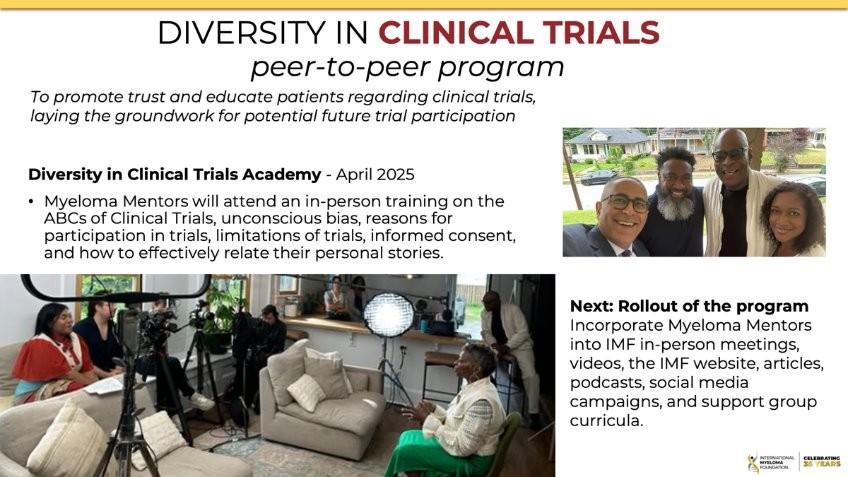

Importance of Clinical Trial Participation by Diverse Populations
[P]eople from racial and ethnic minorities and other diverse groups are underrepresented in clinical research. This is a concern because people of different ages, races, and ethnicities may react differently to certain medical products.
– FDA

Leadership and commitment


Community engagement practices
Investigator hiring, training, and mentoring practices



Patient engagement practices

US Cancer Centers of Excellence: Strategies for Increased Inclusion of Racial and Ethnic Minorities in Clinical Trials

Commonly Asked Questions
How does the study work? How often will I need to see my doctor or visit the cancer center?

Will I need to undergo additional tests?
What is currently known about the new drug or combination?


What benefits can I expect?
What side effects should I expect? Who should I notify if I have side effects?


Can I take my vitamins or other medications?

Can I get the treatment with my local doctor?



Will my insurance pay for my participation in the clinical trial?


Is A Clinical Trial Right For Me?
Discuss with your physician if you are eligible for a clinical trial
Work with your physician to determine the best trial for you
Meet with the clinical research nurse or trials coordinator to discuss the trial
Carefully review the provided “Informed Consent” Describes the study and any potential safety concerns related to the experimental medication



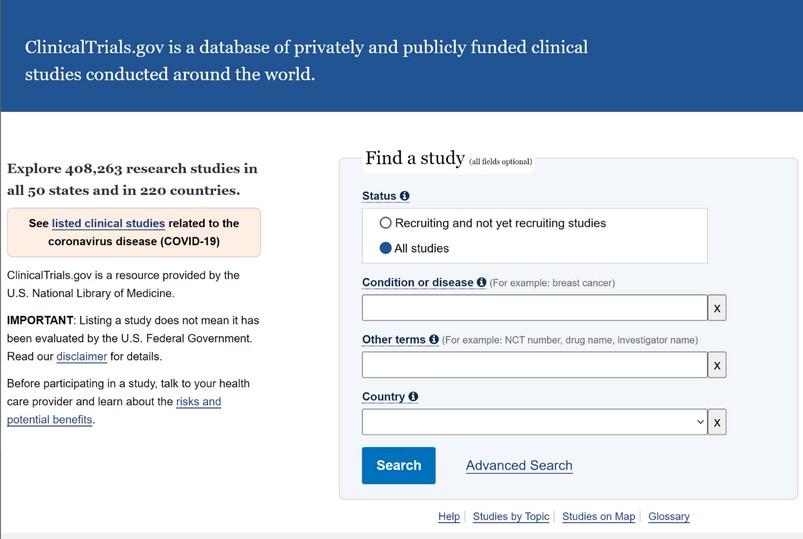
Clinicaltrials.gov https://clinicaltrials.gov/




ncreasing-diversity-in-cancer-clinical-research






Panel Q&A
Fireside Chat: What is the Future of Myeloma? With Q&A
Joseph Mikhael, MD, MEd, FRCPC, FACP, FASCO, Chief Medical Officer ,International Myeloma Foundation

Shaji Kumar, MD Mayo Clinic, Rochester, MN
BREAK

WHEN YOU RETURN FROM BREAK PLEASE HEAD TO YOUR SELECTED BREAKOUT SESSION:
BREAKOUT A: NEWLY DIAGNOSED: FRONTLINE THERAPY
Please move to the Club Room
BREAKOUT B: MANAGING RELAPSED MYELOMA
Please remain in this room
Housekeeping Items
Presentation Slides: Are available by scanning the QR code, Instructions are on the QR code handout on each table.
Program Evaluations: evaluations at the end of the program or on your way out.
Restrooms: Restrooms are located outside the meeting room, either down the stairs from the welcome desk, or on this level: past the welcome desk turn left and the bathrooms are on your left.

Badge Holders: Please return your badge holders and we can recycle them.
We greatly appreciate your time and feedback!


Thank you to our sponsors!













Breakout A: Managing Relapsed Myeloma
Sarah Lee, MD
City of Hope, Duarte, CA
Hot Topics
Emerging approaches in transplant eligible patients
Quadruplet therapy
Role of stem cell transplantation
Treatment approach in a patient that is not going to transplant and how to optimize therapy
Importance of DEPTH of response in early treatment of myeloma and the increasing use of MRD testing
Supportive care – what else do we need to do to support the bones, immune system and general health with myeloma and with treatment?


Breakout B: Managing Relapsed Myeloma
Murali Janakiram, MD, MS
City of Hope, Duarte, CA

LUNCH
Located in Sierra Ballroom B

Advocacy
Update:
What you need to know
Danielle Doheny, Director of Public Policy and Advocacy
International Myeloma Foundation
2025 Myeloma Advocacy Priorities & How You Can Get Involved
Danielle Doheny IMF, Director of U.S. Policy & Advocacy


Introduction | Advocacy at the IMF
The Global Advocacy Team collaborates with multiple stakeholders to inform and influence decision-making on the critical healthcare issues that directly impact myeloma patients.

The U.S. Advocacy Team advocates for equitable access to timely diagnosis, innovative treatments and research on Capitol Hill and with key regulatory

The team advocates both alongside of and on behalf of the patient community that we serve.
Advocacy play a critical role to educate policymakers about the issues important to our community and motivate them to act.
What Do We Advocate For?

The following policy principles are the foundation on which we prioritize our advocacy work.
1. Ensure Access to Care: We advocate for policies that ensure all myeloma patients have equitable, comprehensive, patientcentered care without insurance barriers that limit options or delay treatment initiation.
2. Eliminate Financial Barriers: We advocate for policies that allow myeloma patients access to treatments and supportive care interventions without facing financial hardships.
3. Advance Myeloma Research: We advocate for annual appropriations funding for myeloma research and the advancement of clinical trial eligibility and research protocols that ensure representation from diverse populations.
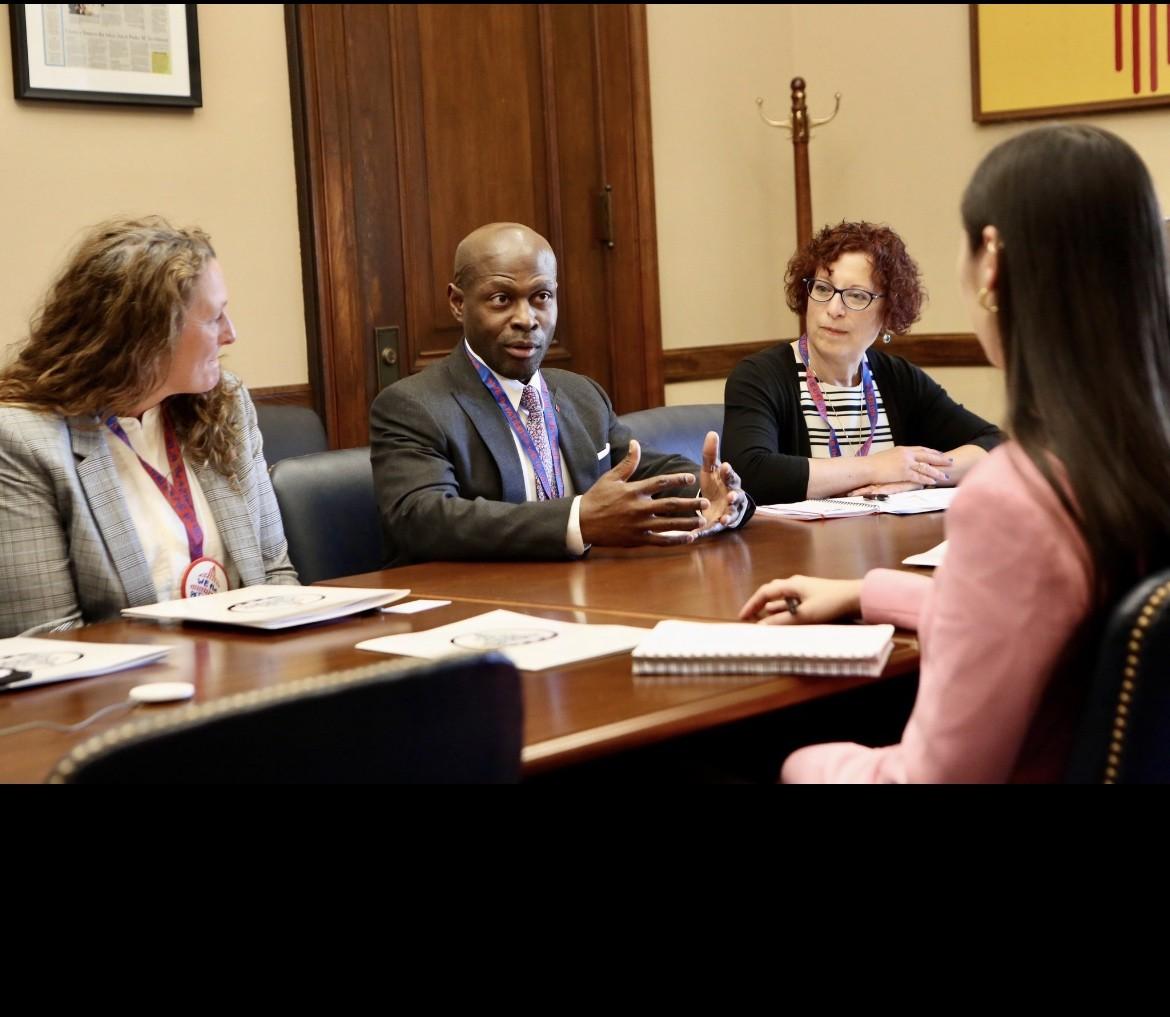

2025 U.S. Advocacy Priorities Snapshot

1. ENSURE ACCESS TO CARE
2. ELIMINATE FINANCIAL BARRIERS
3. ADVANCE MYELOMA RESEARCH
INSURANC E REFORM: DRUG ACCESS
Step Therapy Protocols Safe Step Act
INSURANC E REFORM: COINSURANCE
Oral Parity Cancer Drug Parity Act
INSURANC E REFORM: DRUG ACCESS PBM Reform PBM Reform Act
INSURANC
E REFORM: COPAYS Copay Accumulators HELP Copays Act
FEDERAL FUNDING
ANNUAL APPROPS
Annual Appropriations
NIH: National Cancer Institute, National Institute on Minority Health, ARPA-H
CDC: Comprehensive Cancer Control Initiative
DoD: Congressionally Directed Medical Research Program (CDMRP) for Myeloma.
MEDICARE REFORM:
PHYSICIAN ACCESS
Tele-Health/Medicine
Telehealth Modern. Act
MEDICARE REFORM: ANNUAL COST LIMITS
Inflation Reduction Act implementation Cap & Smoothing (MPPP), Drug Pricing, Drug Formularies
CLINICAL
TRIAL ACCESS
Primary care education, Focus on underserved, POC, rural settings and socioeconomically disadvantaged groups

Inflation Reduction Act (IRA) & Highlight of Changes to Medicare
The Inflation Reduction Act (IRA) of 2022 is a federal law which aims to curb inflation by working to reduce the federal government budget deficit, lowering Medicare prescription drug prices and investing in domestic energy production.

1.
3.
• Inpatient hospital stays
• Care in a Skilled Nursing Facility
• Hospice Care
• *Does not cover regular MD visits or Rx drugs





What is Going on in DC/Why This is Important to Us

• Cancer and Public Health Funding:
Proposed cuts to NCI, NIH, CDC, and CDMRP threaten cancer research, treatment advances, and public health programs. The Senate has rejected these cuts in a bipartisan, but continued advocacy is essential to maintain progress.
• Reconciliation and Medicaid Cuts:
Proposed Medicaid cuts could reduce healthcare access for vulnerable patients. We’re actively advocating to protect Medicaid’s role in ensuring timely, affordable treatment.
• Cancer Drug Parity Act & Access Issues:
The Cancer Drug Parity Act, recently introduced in the House, aims to ensure insurance covers oral cancer drugs equally to IV treatments by lowering out-of-pocket costs and improving access. We continue working with congressional champions to advance this bill despite broader legislative challenges

How You Can Get Involved





Blood Cancer Awareness Month Capitol Hill
Visit
Your Voice Matters in Washington, D.C.
•Together, we’ll share stories and advocate for better treatment access and research funding.
•No policy expertise needed: Just a willingness to share your experience.
•We provide guidance every step of the way.
•Note: This session is full; patients for September are already trained and ready.
•You can’t join this time, but you can get trained now!
•This September, IMF will bring myeloma patients and caregivers to Capitol Hill to meet with lawmakers.
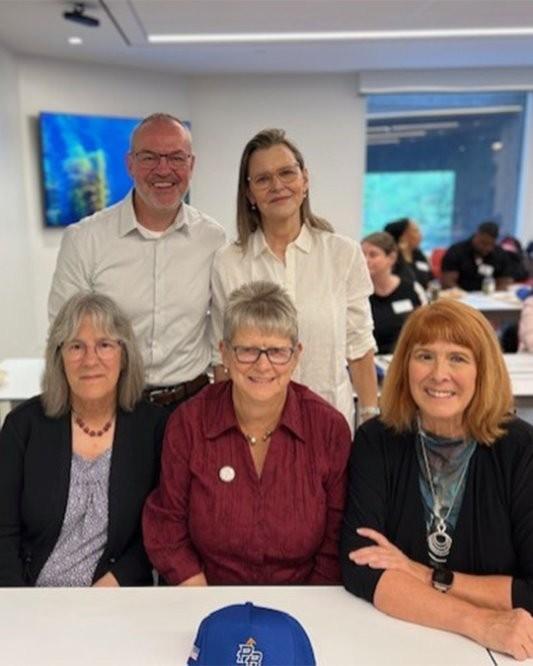

•Email us to take our Master Class and prepare for the next Hill Day.

Addressing healthcare barriers for multiple myeloma patients depends on winning over the hearts and minds of policymakers. It is not enough to just identify an issue and have data-driven evidence/research to back it up. It is not even enough to work with coalition partners that agree with our point of view. We must convince policymakers to prioritize our issues, draft legislation and vote it into law. Email



Thank You



Symptom Management and Living Well with Myeloma
Donna D. Catamero, ANP-BC, OCN®, CCRC
The Mount Sinai Health System
Myeloma: Putting the Pieces of the Puzzle Together
Donna D. Catamero ANP-BC, OCN®, CCRC
Mount Sinai Hospital - New York, New York


A presentation from the IMF’s Nurse Leadership Board
Myeloma: Putting The Pieces of the Puzzle



Focus on Managin g Sympto ms





Myeloma Is a Cancer of the Plasma Cells
Plasma Cells come from white blood cells produced in the bone marrow and make many different antibodies to help fight infection (polyclonal).


In Multiple Myeloma, one plasma cell mutates, making many identical plasma cells (monoclonal).



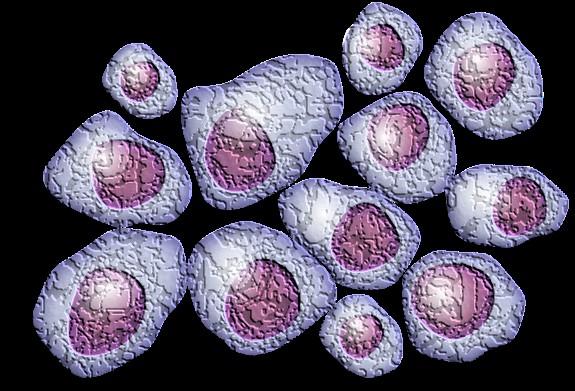






Bone marrow
Bone marrow

Myeloma Causes Cell Dysfunction &










Anxiety
Stress
Depression
Decreased red blood cells



Anemia & Fatigue


Decreased white blood cells

Myeloma protein in blood and urine
Changes in bone remodeling
Clonal myeloma plasma cells can cause many symptoms
– Crowd out normal bone marrow cells
– Produce myeloma protein
– Can cause kidney dysfunction
– Affect bone cells (balance of osteoclasts & osteoblasts)
Immune Dysfunction & Infection


Renal Dysfunction









Infections Are Serious for People with Myeloma
Preventing infections is paramount.
Infection remains the leading cause of death in patients with multiple myeloma. Several factors account for this infection risk, including the overall state of immunosuppression from multiple myeloma, treatment, age, and comorbidities (e.g., renal failure and frailty).
IMWG Consensus guidelines and recommendations for infection prevention in multiple myeloma; Lancet Haematol.2022;9(2):143–161.
Infection Prevention Tips
Good personal hygiene (skin, oral)
Environmental control (avoid crowds and sick people; use a high-quality mask when close contact is unavoidable)

Report fever of more than 100.4°F, shaking chills even without fever, dizziness, shortness of breath, low blood pressure to HCP as directed.
As recommended by your healthcare team:
Immunizations:
Flu, COVID, RSV & and pneumococcal vaccinations; avoid live vaccines
Preventative and/or supportive medications


Kidney and Bone Health

Protect Kidney Function
Myeloma Treatment
Stay hydrated--drink water
Avoid certain medications
• IV contrast dyes


Protect Bone Health
Myeloma Treatment
Nutrition
Vitamin D
Calcium (if approved by doctor)
• NSAIDs like Advil (ibuprofen), Aleve (naproxen)
Be alert: symptoms of kidney dysfunction
• Fatigue and weakness
• Nausea and vomiting
• Foamy or dark urine
• Swelling in feet, ankles, or face
• Shortness of breath
• Persistent itching
• Loss of appetite
• Muscle cramps
• High blood pressure

Weight-bearing activity (i.e., walking, standing, climbing stairs, stretching, dancing)
Bone-strengthening agents (prescribed by your healthcare team)

Report any new or worsening bone pain to your healthcare provider


Pain Management
Pain can significantly compromise quality of life and add to distress
Prevention
Sources of pain include bone disease, neuropathy and medical procedures.
Decrease fracture risk through myeloma treatment, bone strengthening agents, physical activity, preventative surgery
Prevent Nerve Damage: prevent shingles, manage diabetes, myeloma medication dosing and route of administration
Combine scheduled medical procedures, when possible (Ex. blood draw, biopsy), use sedation if available

Treatment
Interventions depend on source of pain, may include
Medications, Surgery, Radiation therapy, etc.
Physical therapy & continued activity, complementary therapies (Mind-body, meditation, yoga, supplements, acupuncture, etc.)
Scrambler therapy for neuropathy



Myeloma: Putting The Pieces of the Puzzle




Managin g Sympto ms






Treatment of Newly Diagnosed Multiple Myeloma (NDMM)

Induction
Initial treatments aimed at reducing the amount of myeloma cells

Consolidation
Intensification of treatment to deepen response. Either additional cycles of induction or autologous stem cell transplant (in eligible patients) National Comprehensive Cancer Network® (NCCN®) NCCN Clinical Practice Guidelines In Oncology (NCCN Guidelines®) for Multiple Myeloma. Version 1.2025. To view the most recent or complete
Maintenance

Prolonged lower-intensity treatment designed to sustain remission


Induction Standard of Care
Induction

Quadruplet therapy is preferred for nearly all patients with newly diagnosed myeloma

Anti-CD38 monoclonal antibody (mAb)
• Darzalex (daratumumab)
• Sarclisa (isatuximab)

Proteosome
Inhibitor (PI)
• Velcade (bortezomib)
• Kyprolis (carfilzomib)

At infusion clinic: subcutaneous injection or infusion
Supportive medication:
Immunomodulator
y drug (IMiD)
• Revlimid (lenalidomide)
• Pomalyst (pomalidomide)

Steroid
• Decadron (dexamethasone)
• Prednisone
Oral medication taken at home
• Antiviral prophylaxis (i.e., acyclovir or valacyclovir) to prevent viral infections particularly shingles.
• Antibacterial agents (i.e., Bactrim, levofloxacin) to prevent bacterial infections.
• Aspirin or other anticoagulant therapy to reduce the risk of blood clots from IMiDs.
• Bone-strengthening agents (i.e., zoledronic acid, denosumab) to strengthen bones and protect against fractures.


Steroids: An Important Piece Of The Treatment Plan
Steroids enhance the effectiveness of other myeloma therapies

Your provider may decrease or discontinue the dose as myeloma responds to therapy.
Do not stop or alter your dose of steroids without discussing it with your provider
Steroid Side Effects
• Irritability, mood swings, depression
• Blurred vision, cataracts
• Increased risk of infections, heart disease
• Muscle weakness, cramping
• Increased blood pressure, water retention
• Difficulty sleeping (insomnia), fatigue
Managing Steroid Side Effects
• Flushing/sweating
• Stomach bloating, hiccups, heartburn, ulcers, or gas
• Weight gain, hair thinning/loss, skin rashes
• Increased blood sugar levels, diabetes
Consistent schedule (AM vs. PM)
Take with food
Stomach discomfort: Over-thecounter or prescription medications
Medications to prevent shingles, thrush, or other infections
Rajkumar SV, et al. Lancet Oncol 11(1):29–37. King T, Faiman B. Clin J Oncol Nurs. 2017;21(2):240-249. Banerjee,R. et al. Blood 9.25.24


Peripheral Neuropathy
Peripheral neuropathy happens when there is damage to nerves in the extremities (hands, feet, limbs). Damage can be the result of myeloma, treatment or unrelated conditions (i.e., diabetes).
Symptoms: Numbness
Tingling
Prickling sensations
Sensitivity to touch
Burning and/or cold
sensation
Muscle weakness

Prevention / management:
Bortezomib once-weekly and/or subcutaneous administration
Massage area with cocoa butter regularly
Neuroprotective Supplements
• i.e., B-complex vitamins (B1, B6, B12)
Safe environment: rugs, furnishings, shoes
If neuropathy worsens, your provider may:
Adjust your treatment plan
Prescribe oral or topical pain medication
Suggest physical therapy
Nerve damage from neuropathy can be permanent.
Early reporting of symptoms may prevent worsening symptoms.
Faiman B, et al. CJON. 2017;21(5)suppl:19-36. Tariman, et al. CJON.2008;12(3)suppl:29-36. Zhao T, et al. Molecules. 2022;27(12):3909.



Blood Clots: Managing DVT and PE Risk
Blood clots can cause swelling, pain, discoloration (DVT), shortness of breath, chest pain, sense of doom (PE).

► HCPs may manage DVT/PE risk by
• Adjusting medications and schedules
• Prescribing blood-thinning medications according to assessed risk (DOAC, aspirin, warfarin, heparin)
• Balancing the risk of DVT and PE with that of bleeding with low platelets
► Additional strategies to reduce risk of clots:
• Anti-embolism stockings (elastic stockings)
• Exercise regimen
• Moving frequently when sitting long periods
• Travel precautions (foot/leg exercises, walking, aspirin if not already on blood thinner)
DVT=Deep Vein Thrombosis; PE=Pulmonary Embolism

and


Immobility
Rome, S, et al. Clin J Oncol Nurs. 2008;12(3)suppl:37-52. Faiman B. Clin J Oncol Nurs. 2016;20(4):E100-E105. De Stefano, et al. Hematologica, 2022


Stem Cell Transplant
ELIGIBILITY

P H A S E 1

Measuring treatment response
Testing for Eligibility
Insurance authorization
Collecting stem cells

Duration: Approximately 2 weeks
Location: Transplant Center

A S E 2 TRANSPLANT
P H
HD-Melphalan
Stem cell infusion
Supportive Care
• GI Management
• Transfusions
• Antibiotics
Hair Loss
Engraftment

Duration:
Approx. 3-4 weeks
Location: Transplant Center



P H A S E 3
POSTTRANSPLA NT
Restrengthening
Appetite recovery “Day 100” assessment
Begin maintenance therapy

Duration: Approximatel y 10-12 weeks
Location: HOME

Upfront stem cell transplant remains the standard of care for eligible patients

Miceli T and Steinbach, M. Multiple Myeloma: A Textbook for Nurses. 2021. NCCN Guidelines. Multiple Myeloma. V1.2025.

GI Symptoms: Prevention & Management
Fluid intake can help with both diarrhea and constipation and helps kidney function
Constipation is more common in the induction phase
Opioid pain relievers, antidepressants, heart or blood pressure medications (check with provider, pharmacist)
Supplements: Calcium, Iron, vitamin D (rarely), vitamin B-12 deficiency
Anorexia, the inability to eat, is common during transplant and resolves with time.
• Hydration is most important
• Small, frequent meals with a focus on protein intake
• You will work closely with a dietician to help monitor your calorie intake
Diarrhea is common during transplant and long-term maintenance therapy.
Other medications and supplements can cause GI issues.
Hydration is very important
Electrolyte replacement is common
Good skin care will help prevent irritation
Stool exam may be needed to rule-out infection
Increase fiber
Stay well hydrated
Fruits, vegetables, high fiber whole grain foods
Fiber binding agents – Metamucil® ,
Citrucel®, Benefiber®
If no infection, anti-diarrheal medication may be prescribed

Discuss GI issues with healthcare providers to identify causes and adjust medications and supplements
Smith LC, et al. Clin J Oncol Nurs. 2008;12(3)suppl:37-52. Faiman B. Clin J Oncol Nurs. 2016;20(4):E100-E105.

Myeloma: Putting The Pieces of the Puzzle










Relapsing Nature of Myeloma
=
Adapted from Durie B. Keats JJ, et al. Blood. 2012;120(5):1067-1076.


Many Treatment Options at Relapse
Myeloma Therapies Common Combinations
Belantamab mafodotinb Bela, BVd, BPd, BKRd
Bispecific Antibodies
Bortezomib (SQ admin)
Elrexfio®, Lynozyfic™, Talvey® , Tecvayli®
VRd, Vd, VCd
Carfilzomib KRd, Kd, Dara-Kd, Isa-Kd
Car T-cell therapies
Cilta-Cel® or Ide-Cel®
Daratumumab Dara-Rd, Dara-Vd, Dara-Pd, Dara-VMp, Dara-Kd
Elotuzumab
ERd, EPda
Isatuximab Isa-Pda, Isa-Kd
Ixazomib IRd
Lenalidomide
VRd, Rd, KRd, Dara-Rd, ERd, IRd
Pomalidomidea Pda, Dara-Pd, EPda, PCdb
Selinexor Xd, XVd, XKdb, Dara-Xdb
New agents or regimens in clinical trials are always an option
a2 or more prior therapies. bOff-label; not currently FDA-approved.

Many treatment options are available.
More therapies are being studied
Clinical trials may be an option


C = cyclophosphamide; d = dexamethasone; Dara = daratumumab; FDA = US Food and Drug Administration; E = elotuzumab; Isa = isatuximab; I = ixazomib; K = carfilzomib; M = melphalan; p = prednisone; P = pomalidomide; R = lenalidomide; SQ = subcutaneous; V = bortezomib; X = selinexor.
Rajkumar SV. 2024 Myeloma Algorithm. https://clinicaloptions.com/CE-CME/oncology/2024-mm-algorithm/18440-26989. Accessed 12.14.24. NCCN Guidelines®. Multiple Myeloma. V3.2024. Accessed March 15, 2024. Noonan K, et al. J Adv Pract Oncol. 2022;13(suppl 4):15-21. Steinbach M, et al. J Adv Pract Oncol. 2022;13(suppl 4):23-30. Moreau P, et al. Lancet Oncol. 2021;22(3):e105-e118. O’Donnell EK, et al. Br J Haematol. 2018;182(2):222-230. Mo CC, et al. EJHaem. 2023;4(3):792-810. Chang D. et al., Blood 2024, Abstract 2287.


CAR T Cell Therapy

BCMA target
• Abecma (Ide-Cel)
• Carvykti (Cilta-Cel)

1
Relapsed MM with 1-2 prior LOT Bridging therapy, if needed; Lymphodepleting therapy when CAR T cells are ready T Cell Infusion Close monitoring and Management of side effects
T-Cell Engager (TCE) Therapies
Relapsed MM after 4 prior LOT (or clinical trials)

TCE are innovative immunotherapies used in the treatment of relapsed multiple myeloma. These therapies work by redirecting the patient's own T-cells to recognize and attack myeloma cells.



3


2 a 2 b 4 5 HOME ! Apheresis to Collect T Cells T Cell Manufacturi ng
Bispecific antibodies
• About 7 in 10 patients respond
• Off-the-shelf treatment; no waiting for engineering cells
BCMA target: greater potential for infection
• Tecvayli® (teclistamab)
• Elrexfio ® (elranatamab)
Cytotoxic cytokines

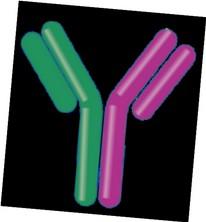


Bispecific antibody T cell MM cell

• Lynozyfic™ (linvoseltamab)
GPRC5D target: potential for skin and nail side effects, GI issues of taste change, anorexia and weight loss


CAR T= Chimeric Antigen Receptor T Cell; LOT = Lines of
• Talvey ® (talquetamab)

BISPECIFIC ANTIBODIES
BCMA = B-cell maturation antigen; CAR = chimeric antigen receptor; GPRC5D = G protein–coupled receptor, class C, group 5, member D; MM = multiple myeloma; scFV = single chain fragment variable.
Hucks G, Rheingold SR. Blood Cancer J. 2019;doi:10.1038/s41408-018-0164-6.

Shah N, et al. Leukemia. 2020;34(4):985-1005. Yu B, et al. J Hematol Oncol. 2020;13:125.


CAR T and Bispecific Antibodies: Known Side Effects
CYTOKINE RELEASE
SYNDROME
• Fever
• Fatigue & Weakness
• Headache
• Nausea/Vomiting/Diarrhea
• Chills
• Low blood pressure
• Rapid heart rate

CRS is a common but often mild & managea ble side effect

Neurotoxicity is a rare but a serious side effect
• Difficulty breathing PREVENTION AND MANAGEMENT
• Disease management to reduce tumor burden
• Bispecific Step-Up Dosing (SUD)
• Tocilizumab
• Steroids
• Anti-Seizure medications
• Intravenous Immunoglobulin (IVIG)
• Close monitoring

ICANS AND NEUROTOXICITY
• Headache
• Difficulty concentrating
• Lethargy
• Agitation
• Hallucinations
• Tremors
• Aphasia (difficulty with speech, reading, writing, or understanding language)
• Confusion
• Memory loss
• Personality change
• Delayed Neurotoxicity can include Parkinsonism, Cranial Nerve Palsies and Peripheral Neuropathy/Guillan Barré syndrome (GBS)
CAR = chimeric antigen receptor. ICANS = Immune Effector Cell-Associated Neurotoxicity Syndrome Brudno JN, Kochenderfer JN. Blood. 2016;127(26):3321-3330. Lee DW, et al. Biol Blood Marrow Transplant. 2019;25:625-638. Kumar, et al. Blood (2024) 144 (Supplement 1): 4758.


Infection: Medications Can Mitigate Risk
Type of Infection Risk
Medication Recommendation(s) for Healthcare Team Consideration
Viral: Herpes Simplex (HSV/VZV); CMV Acyclovir prophylaxis
Bacterial: blood, pneumonia, and urinary tract infection
PJP (P. jirovecii pneumonia)
Fungal infections
COVID-19 and Influenza
Consider prophylaxis with levofloxacin
Consider prophylaxis with trimethoprimsulfamethoxazole
Consider prophylaxis with fluconazole
Antiviral therapy if exposed or positive for covid per institution recommendations
IgG < 400 mg/dL (general infection risk) IVIg recommended
ANC < 1000 cells/μL (general infection risk)

Consider GCSF 2 or 3 times/wk (or as frequently as needed) to maintain ANC > 1000 cells/μL and maintain treatment dose intensity


Weight, GI Symptoms & The Drugs That Affect Them: Prevention
& Management
Anorexia (difficulty eating) Weight loss
• ASCT
• GPRC5D therapy
Steroids Weight gain, fluid retention
Excess hunger ASCT
GPRC5Ddirected therapy Opioids

Weight Loss
Weight Gain
Weight Management
• Monitor weight for significant loss or gain
• Adjust diet (reduce calories or add supplements )
• Work with a dietician
Smith LC, et al. Clin J Oncol Nurs. 2008;12(3)suppl:37-52. Faiman B. Clin J Oncol Nurs. 2016;20(4):E100-E105.

Management of Oral Side Effects

Xerostom
ia

OTC dry mouth rinse, gel, spray are recommended. Avoid hot beverages. Anti-fungal therapy for oral thrush.


Dysgeusi a

Dysphagi a Dietary modifications with small bites, eating upright, and sips with food can help manage symptoms
=Dry Mouth =Difficulty Swallowing =Taste Change

Dexamethasone oral solutions “swish and spit” may provide benefit. Sour citrus or candies before meals are also recommended.
Dental

Care

Attention to oral hygiene.
Regular dental cleaning and evaluation. Close monitoring for ONJ, oral cancer and dental caries


Weight Monitorin g
Some medications lead to weight gain, others to weight loss. Meet with a Nutritionist
Consider diet changes, supplements


Work closely with your entire health care team to manage oral side effects.
=


Skin and Nail Side Effects
Possible side effect to some treatments and supportive care medications

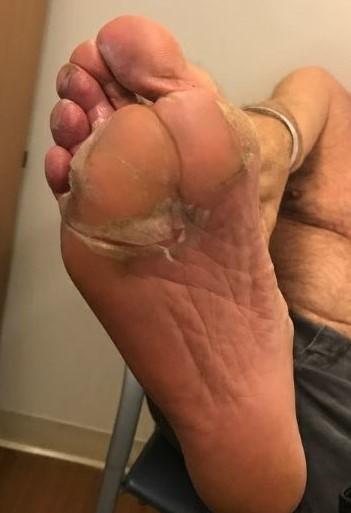
Skin Rash:
Prevent dry skin; apply lotion
Report changes to your care team
Medication interruption or alternative, as needed
Steroids:
• Topical for grades 1-2,
• Systemic and topical for Grade 3
Antihistamines, as needed

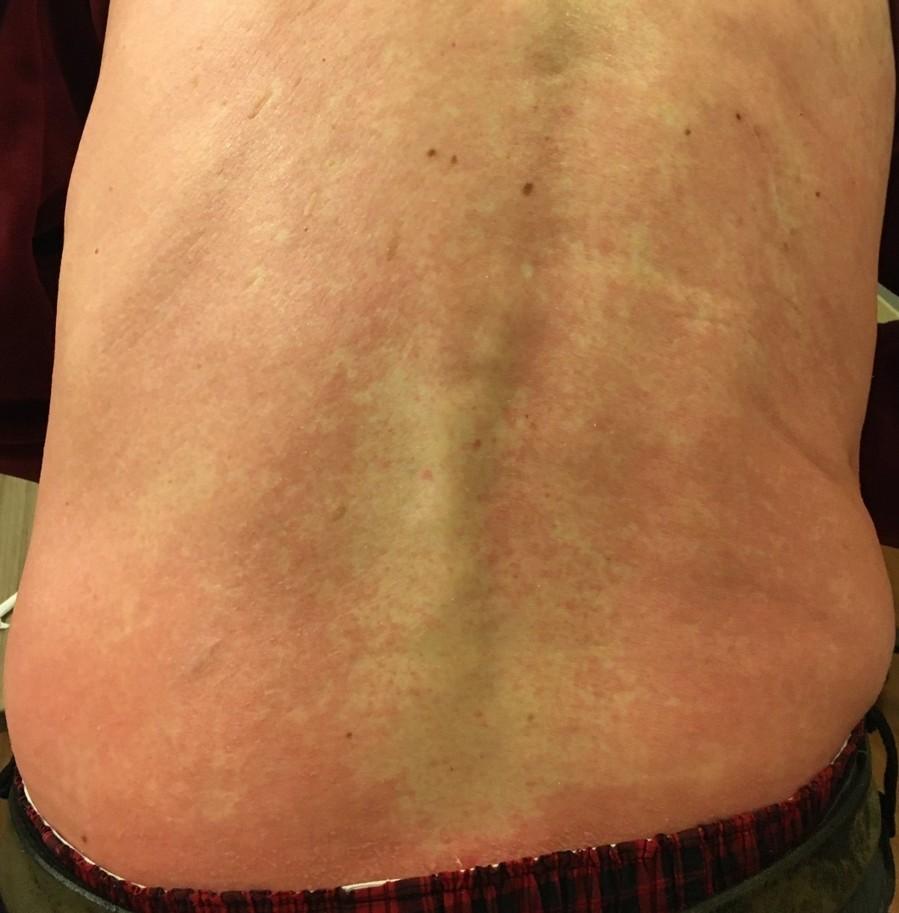
Nail Changes:
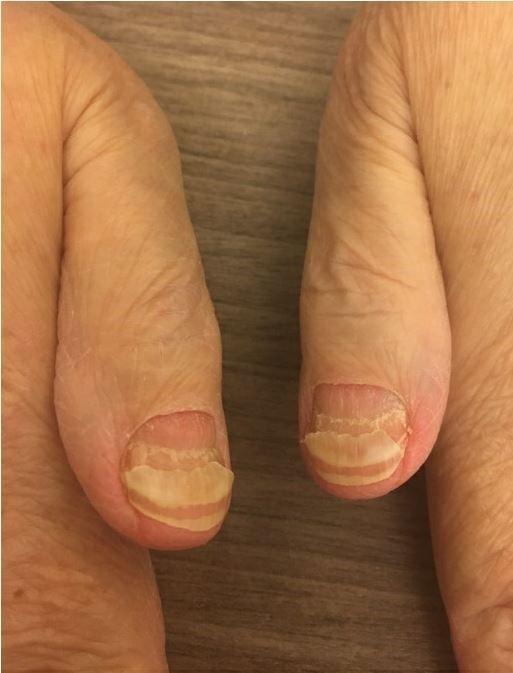

Keep your nails short and clean.
Watch for “catching and tearing”
Apply a heavy moisturizer like Vaseline or salve. Wear cotton hand coverings to bed
A nail hardener may help with thinning
Tell the team if you have signs of a fungal infection, like thickened or discolored nails

Myeloma: Putting The Pieces of the Puzzle











Fatigue, Anxiety and Depression
Fatigue Depression Anxiety
Fatigue is the most reported symptom. Sources include anemia, pain, reduced activity, insomnia, treatment toxicity, bone marrow suppression. Symptoms can improve with continued physical activity.
Symptoms are under-reported:
“I mentioned it before. Nothing can be done.” “I don’t want to be put on another medication.”

>35% of patients ≈25% of patients


More Pieces to the Big Picture
Adopt Healthy Behaviors

• Mental health / social engagement
• Stress reduction; relaxation
• Sufficient Sleep
• Maintain a healthy weight; eat nutritiously
• Activity / exercise / prevent falls, injury
• Stop smoking
Sexual health / intimacy
• Have a PCP for general check ups, preventative care, health screenings, vaccinations

Complementary or alternative therapy
• Have specialists for dental care, eye exams/screening, skin cancer screening


Recommended Health
Screenings
• Blood pressure
• Cholesterol
• Cardiovascular disease
• Colonoscopy
• Dental checkups & cleaning
• Dermatologic evaluation
• Diabetes
• Hepatitis
• Hearing
• Vision
• Women specific: mammography, pap smear
Faiman B, et al. CJON. 2017;21(5)suppl:19-36. Dimopoulous M, et al. Leukemia. 2009;23(9):1545-56.
• Men specific: prostate
Brigle K, et al. CJON. 2017;21(5)suppl:60-76. Faiman B, et al. CJON. 2017;21(5)suppl:19-36. Faiman B, et al. CJON. 2011;15suppl:66-76. Miceli TS, et al. CJON. 2011;15(4)suppl:9-23.



Care Partners: Essential Pieces of the Puzzle
Multiple studies demonstrate that strong social ties are associated with
• Increased longevity including people with cancer
• Improved adherence to medical treatment leading to improved health outcomes
• Lower risk of cardiovascular diseases
• Increased sense of purpose & life satisfaction
• Improved mood and happiness
• Reduced stress and anxiety
• Enhanced resilience
Care partners may help with medical appointments, managing medication, daily living, physical assistance, emotional support, myeloma knowledge, healthy lifestyle, patient advocacy, financial decisions
Care partners can be a spouse, close relative, a network of people (family, friends, neighbors, church members, etc)
Caring for the Care Partner
• Recognize that caregiving is difficult/stressful

• Encourage care partners to maintain their health, interests, and friendships
• The IMF has information and resources to help care partners



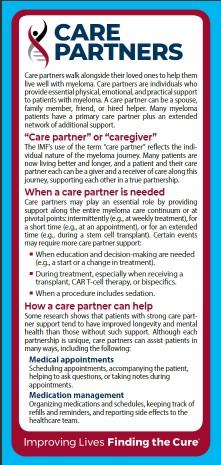






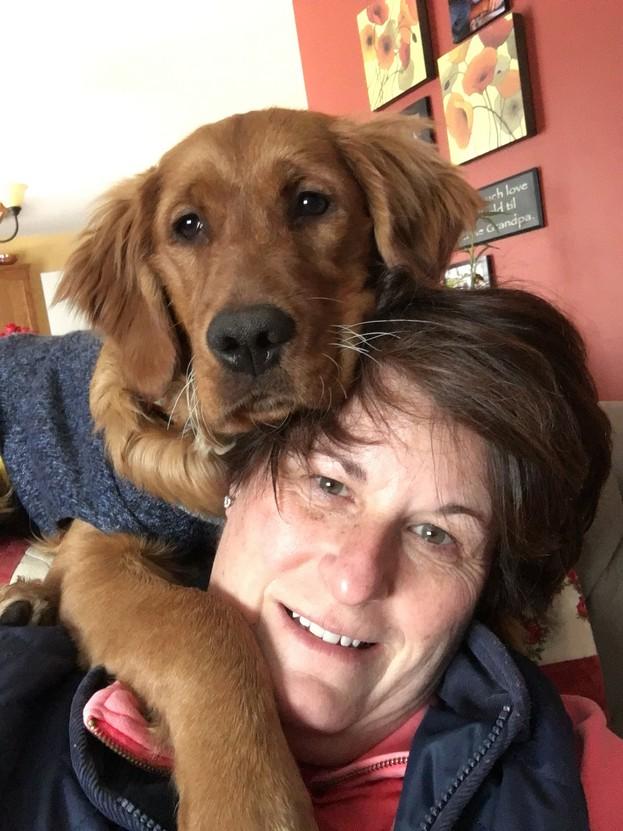





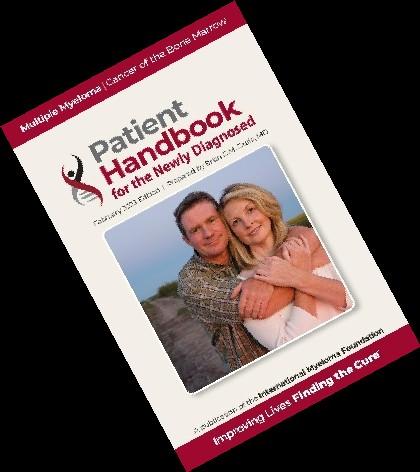




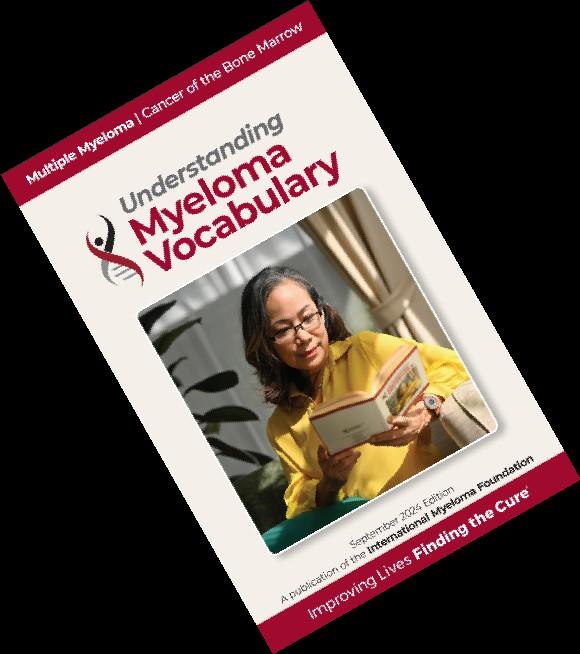










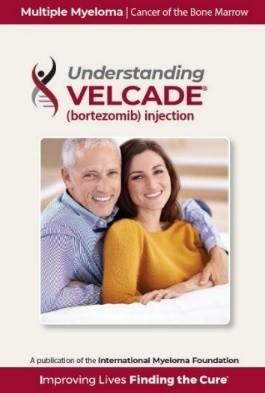











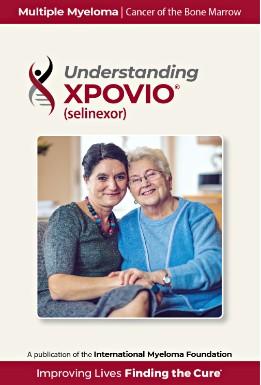


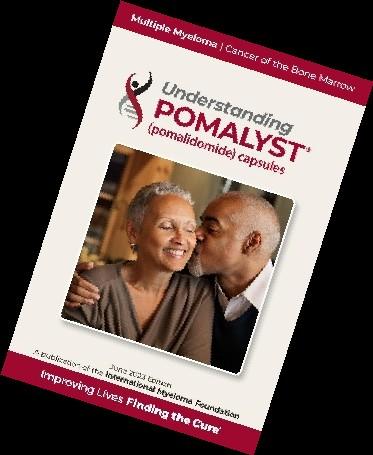




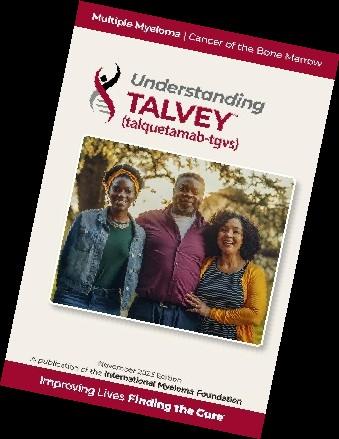



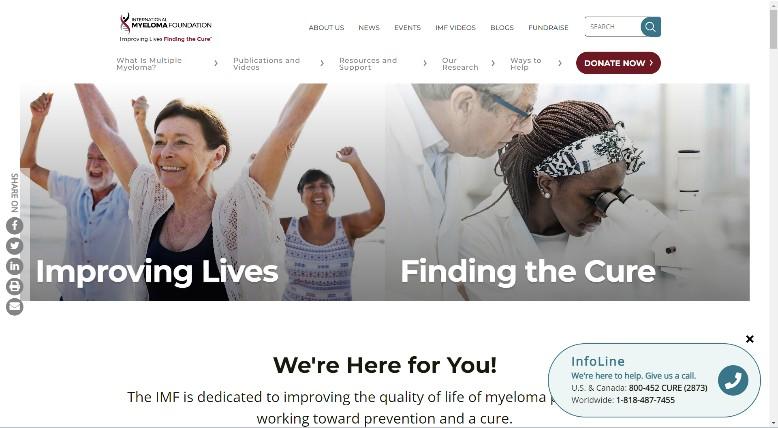






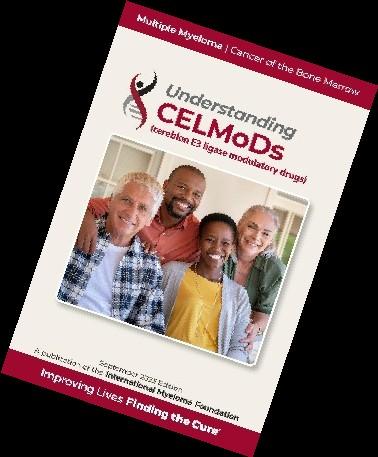



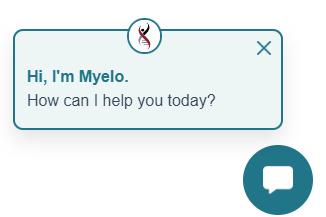




“Thank You!”
From the NLB and the IMF




Closing the Gap: Health Disparities in Myeloma
Joseph Mikhael, MD, MEd, FRCPC, FACP, FASCO, Chief Medical Officer, International Myeloma Foundation

Patient and Family Seminars
HEALTH DISPARITIES IN MYELOMA
Joseph Mikhael MD, MEd, FRCPC
Chief Medical Officer, International Myeloma Foundation
Professor, Translational Genomics Research Institute, City of Hope Cancer Center


What are Health Disparities?
•Health disparities are preventable differences in the burden of disease, injury, violence, or opportunities to achieve optimal health that are experienced by socially disadvantaged populations
- Centers for Disease Control (CDC)
•Health equity generally refers to individuals achieving their highest level of health through the elimination of disparities in health and health care

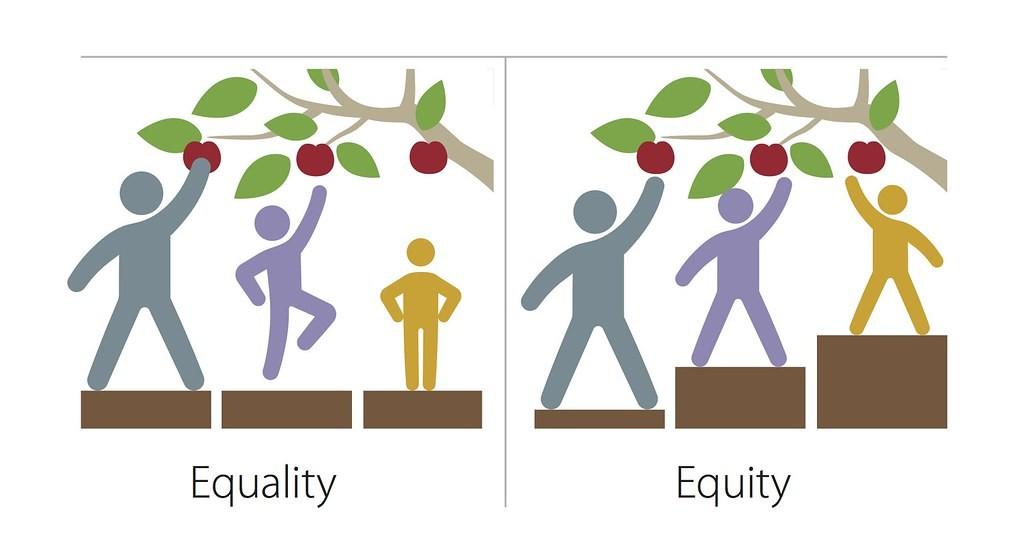

This Photo by Unknown Author is licensed under CC BY-NC
What

A Call to Action Facts About Disparities in Myeloma


M-Power = Myeloma Power

The core vision of this initiative is to improve the short- and long-term outcomes for African American patients with myeloma.
We want to empower patients and communities to change the course of myeloma…
Enhance access to optimal care by educating myeloma providers about the disparity and how to reduce it
Engage the community to increase awareness and provide support
Shorten the time to diagnosis by educating primary care providers to recognize the disease and order the right tests

M-Power Is Both a National and Local Movement


2024 M-Power Community Workshops

April 2024
Multiple cities in Indiana
Annual Indiana Black Barbershop Health Initiative
• Health screenings for Black men on the 1st and 2nd Saturdays in April
• Shared materials on myeloma and M-Power for distribution in 18 barbershops in Evansville, Elkhart, and South Bend



June 20, 2024
New York, New York
50+ attended
76% African American
• 86% planned to share something they learned with their family, friend or healthcare provider
• 100% of attendees rated the program as excellent to very good
September 5, 2024
Charlotte, North Carolina

October 10, 2024
Richmond, Virginia
Primary Care Physician Dinner Meeting
• Presenting on multiple myeloma to the diverse community of healthcare professionals during the quarterly meeting of the Charlotte Medical Dental Pharmaceutical Society
40+ Attended
81% African American
• 88% plan to share something they learned with their family, friend, or healthcare provider
• 100% of attendees rated the program as excellent to very good

Juneteenth 2024: Abyssinian Church, Harlem, NYC

June21st , 2025

CelebratingJuneteenthinBrooklyn,NewYork!





M-Power Community Workshop: Richmond, VA







Facebook Live


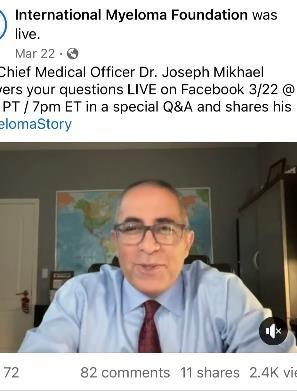






Education of Primary Care Providers
Our goal is to reduce DELAYS in diagnosis among African Americans by educating the primary care community with a focus on:
• Recognizing the signs and symptoms of myeloma
• Discriminating myeloma from other diagnoses such as diabetes
• Capturing an accurate diagnosis through proper use of testing
• Providing referral guidelines for Hematology and Oncology
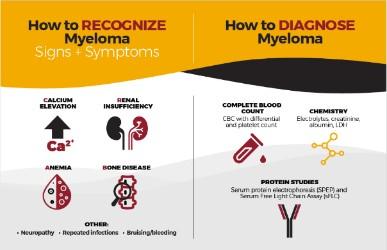

• Grand Rounds

8,000
• Postcards mailed to 6,000+ PCPs in target cities
• Free PCP CME course “Don’t Miss Myeloma”
• Cobb Institute talk

• Talk at NMA Annual Meeting Dinner Meetings Articles and pending publications
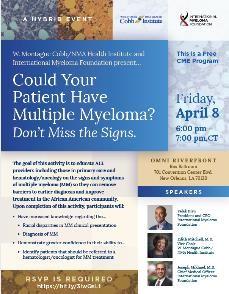


Learners


Annual Meeting of the National Medical Association
• 12 1st – 3rd year medical students from all over the country met on August 5th in NYC at the NMA Annual Convention and Scientific Assembly
• Presented their posters, they worked on with a multiple myeloma experts immediately following the Jane Cooke Wright Symposium; which was dedicated to Dr. Edith Mitchell







Over 400,000 visits to M-Power site!

M-Power Website
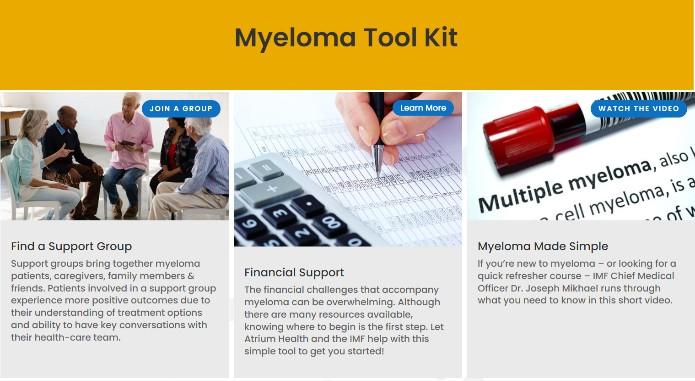








Patient Interview On Local News
M-Power Connections
M-Power Website:
•Web Stats: Over 40k Page views across main, city sites & myeloma.org
•Google PPC targeted web traffic
Email Stats:
•Total Sent: 18 emails
•Total Audience: 38k*
•Open Rate Avg: 31%*
*Note: We have continued to refine lists, contributing to a more engaged audience as evidenced in the Open Rates (The industry standard high-mark is 21%).
M-Minute Promotion Stats:
•Total Sent: 19 emails
•Total Audience: 323k
•Open Rate Avg: 38.91%
M-Power Related Video Stats:
• Total Views: Over 50k

…And Growing!









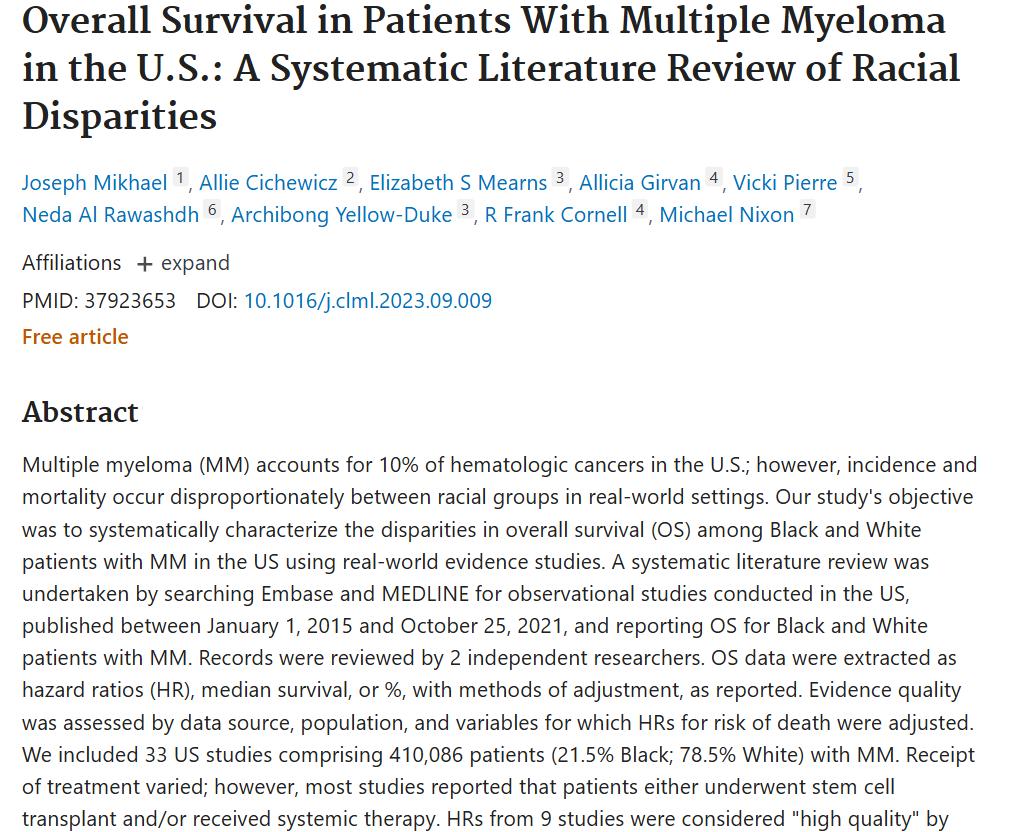
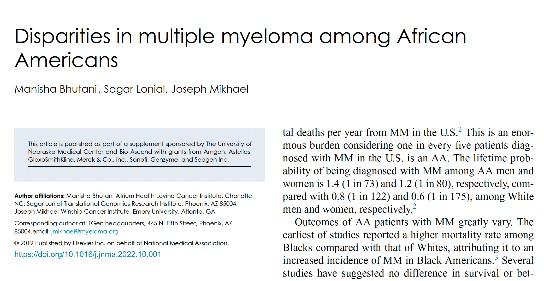



2025 and Beyond
Engage
• 2025 Juneteenth Workshop, NYC
• M-Power Community Workshop in Miami and Philly
• Expand online and social media strategy
Educate
• Primary care program in Charlotte
• Lab based education
• Electronic Medical Record Initiative
Enhance
• Diversity in Clinical Trial Academy as part of the Diversity in Clinical Trials initiative
• Nurse equity decision tool


What Can I Do??

•Be more conscious of the topics of health equity
•Evaluate the opportunities in your experience to reduce disparities
•Support the M-Power movement!




BREAKOUT SESSION 2
PLEASE HEAD TO YOUR SELECTED BREAKOUT SESSION:

BREAKOUT A: PATIENTS ONLY – LESSONS LEARNED
Please remain in this room
BREAKOUT B: CARE PARTNERS ONLY
Please move to the Club Room

Breakout Session A: Patients Only –Lessons Learned
Michael Tuohy, 25-year Myeloma Patient, Support Group Leader

Breakout Session B: Care Partners Only
Robin Tuohy, Vice President - Patient Support
International Myeloma Foundation & 25-year care partner
Controversies in Myeloma: Moderated by Dr. Joseph
Mikhael
Shaji Kumar,
MD
Mayo Clinic, Rochester, MN

Robert Vescio, MD
Cedars-Sinai, Samuel Oschin Cancer Center, Los Angeles, CA

Ask
– the – Experts w/ Guest Faculty

Closing Remarks & Evaluation
Upcoming IMF Events

Patient and Family Seminars
October 3 - 4, 2025 – Chicago PFS – Chicago Marriott
Schaumburg
Regional Community Workshops
September 27, 2025 – Waltham RCW – Embassy Suites by Hilton Boston Waltham
November 15, 2025 – Raleigh RCW – Sheraton Raleigh
Hotel
Online Community Workshops
November 18, 2025

IMF Program Evaluations
Please return your program evaluations on your way out – whether you stay for the full program, or only one session, your feedback is invaluable to our team. Thank you for taking the time completing this.



Thank you to our sponsors!












OUR VISION:
A world where every myeloma patient can live life to the fullest, unburdened by the disease.
OUR MISSION:
Improving the quality of life of myeloma patients while working toward prevention and a cure.

IMF Core Values:
These are the core values we bring to accomplishing our mission each day.
Patient Centric
The patient experience is the focus of everything we do. Every interaction is an opportunity to establish a personal connection built on care and compassion which is the basis for continued support.
Respect All
As a team, we value honesty and transparency while creating a culture of mutual respect. We foster a myeloma community built on sincerity, authenticity, and kindness.
Excellence and Innovation
We value accountability, personal responsibility, and a steadfast commitment to excellence. We respect the legacy and reputation of our organization while seeking new solutions and advancements to improve outcomes, quality of life, and access to the best available resources for everyone impacted by myeloma.
Honor differences
We recognize each team member's skills and talents through collaboration and cooperation. Our programs aim to celebrate and support the diversity of our patients and their communities.





